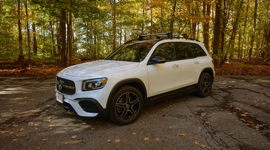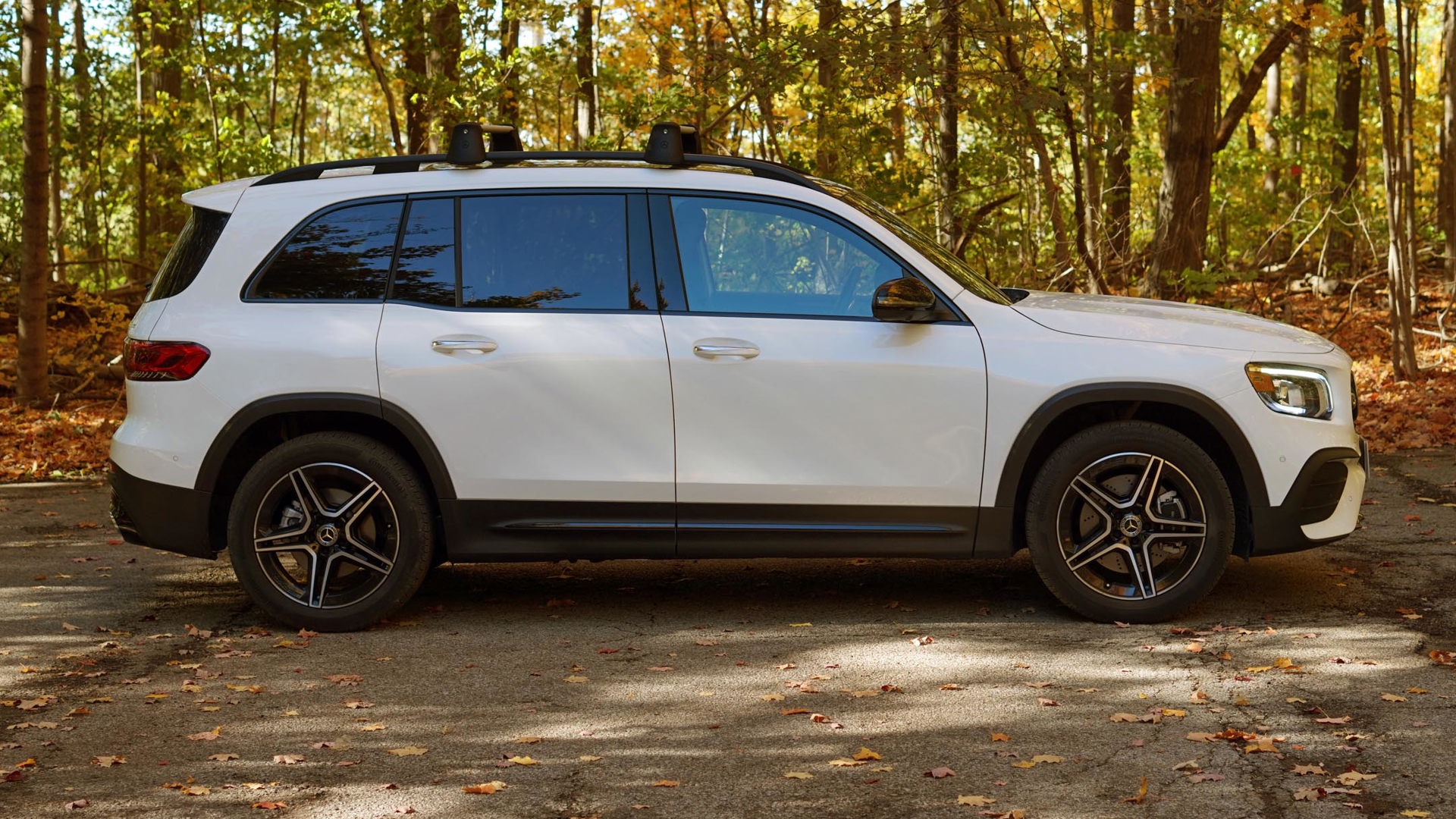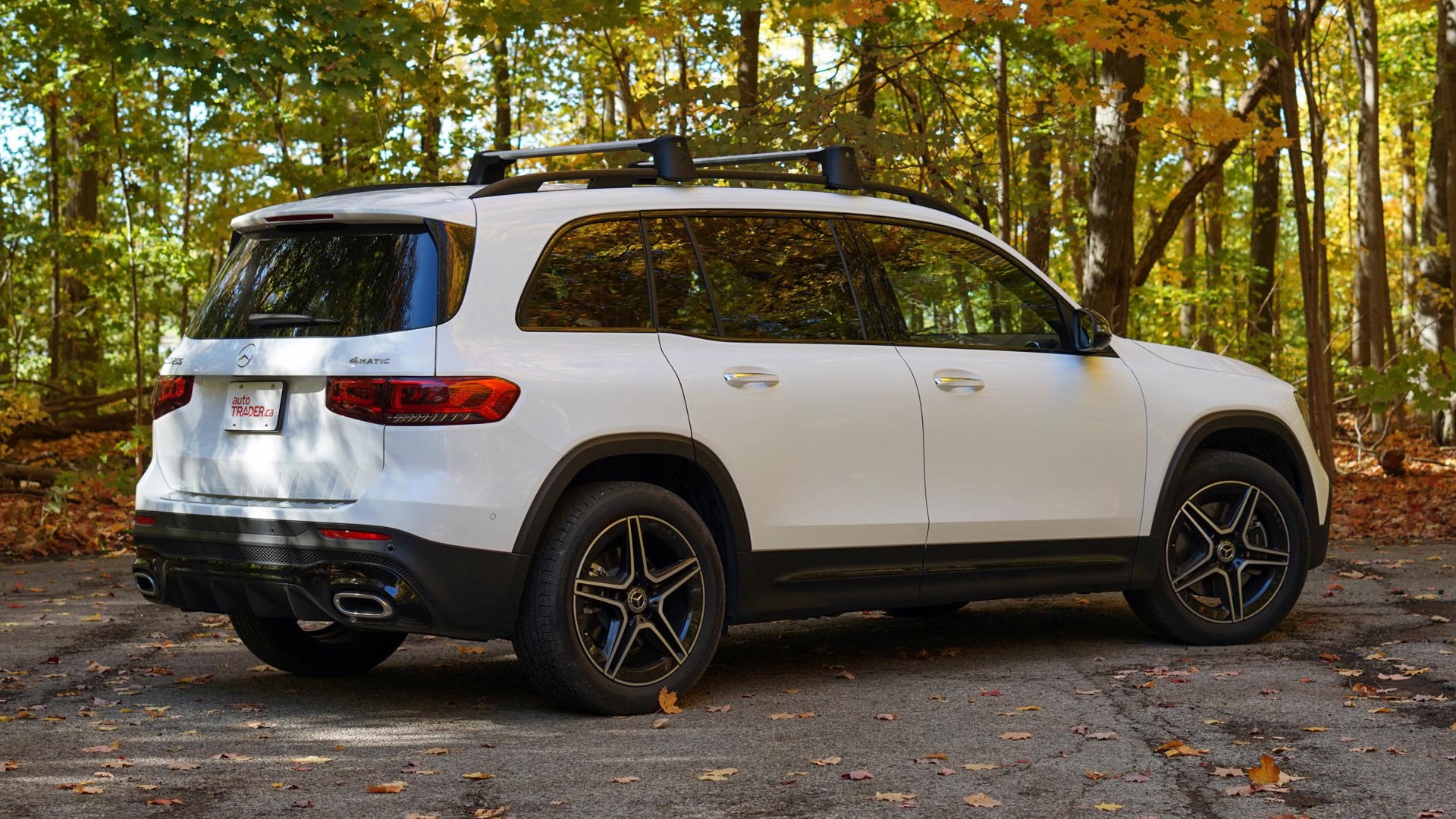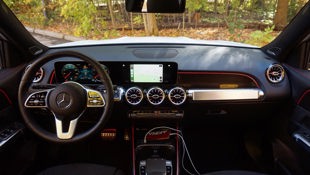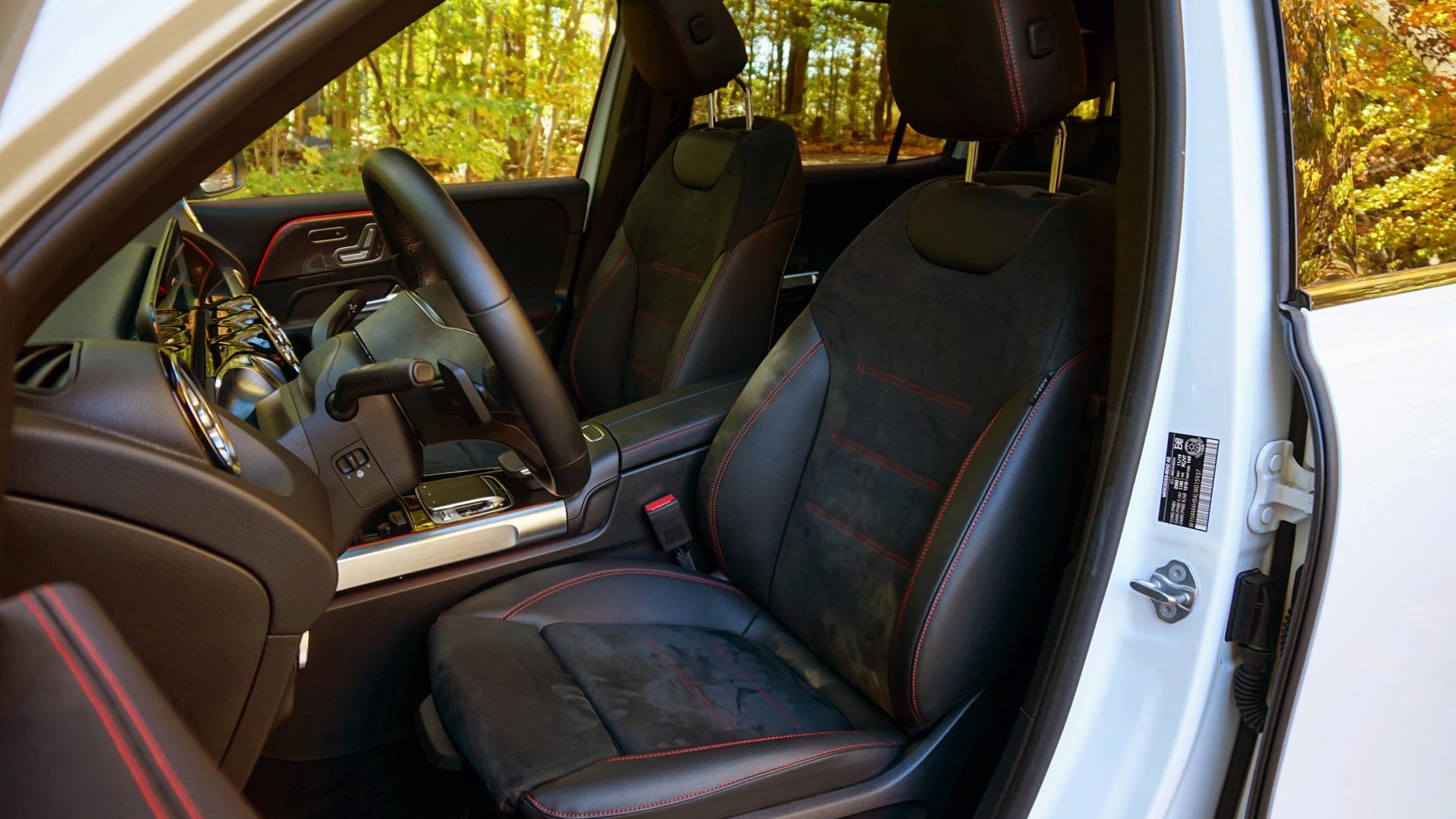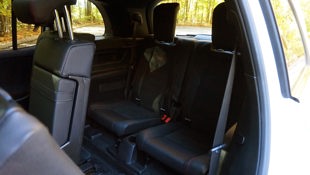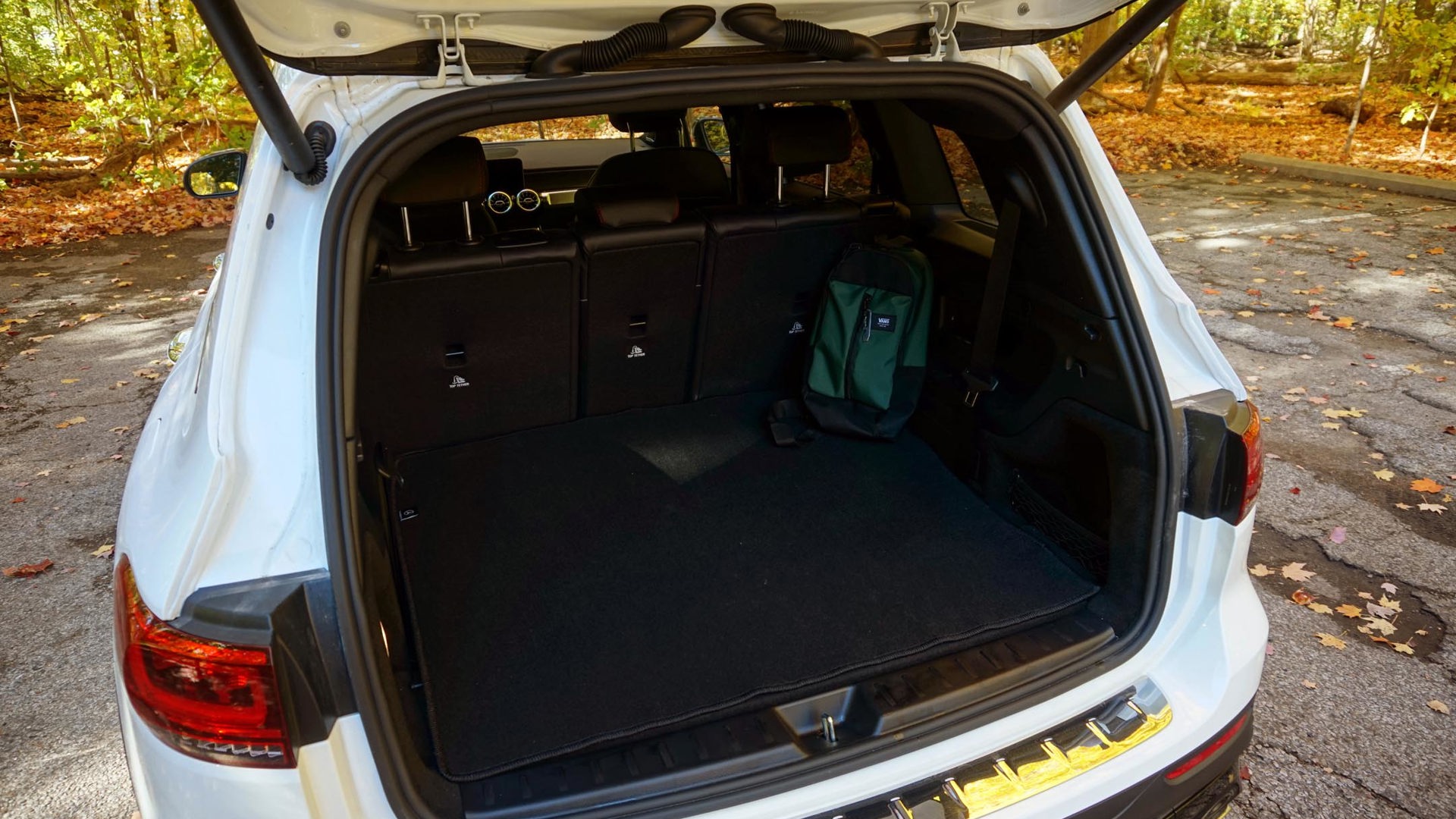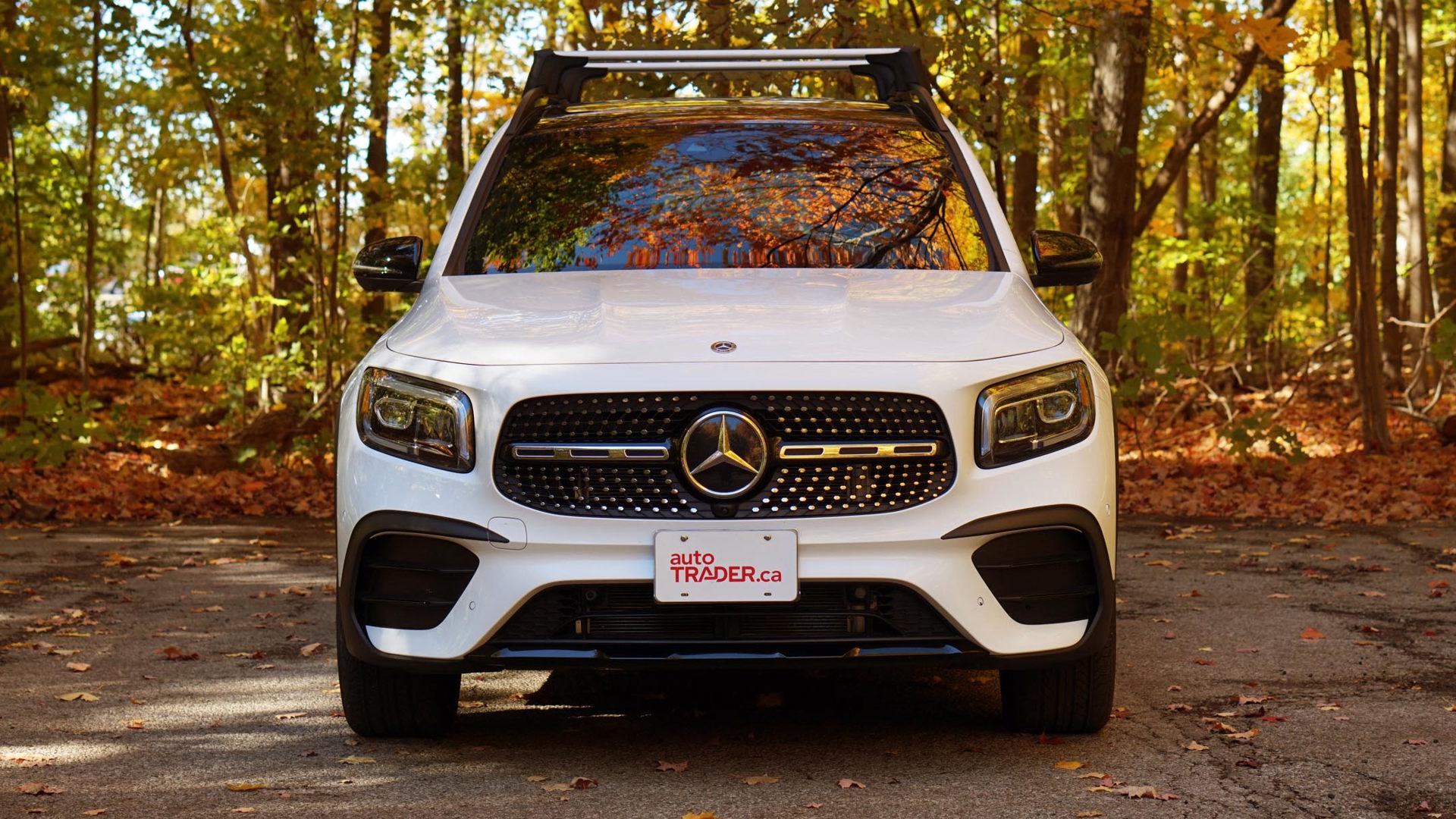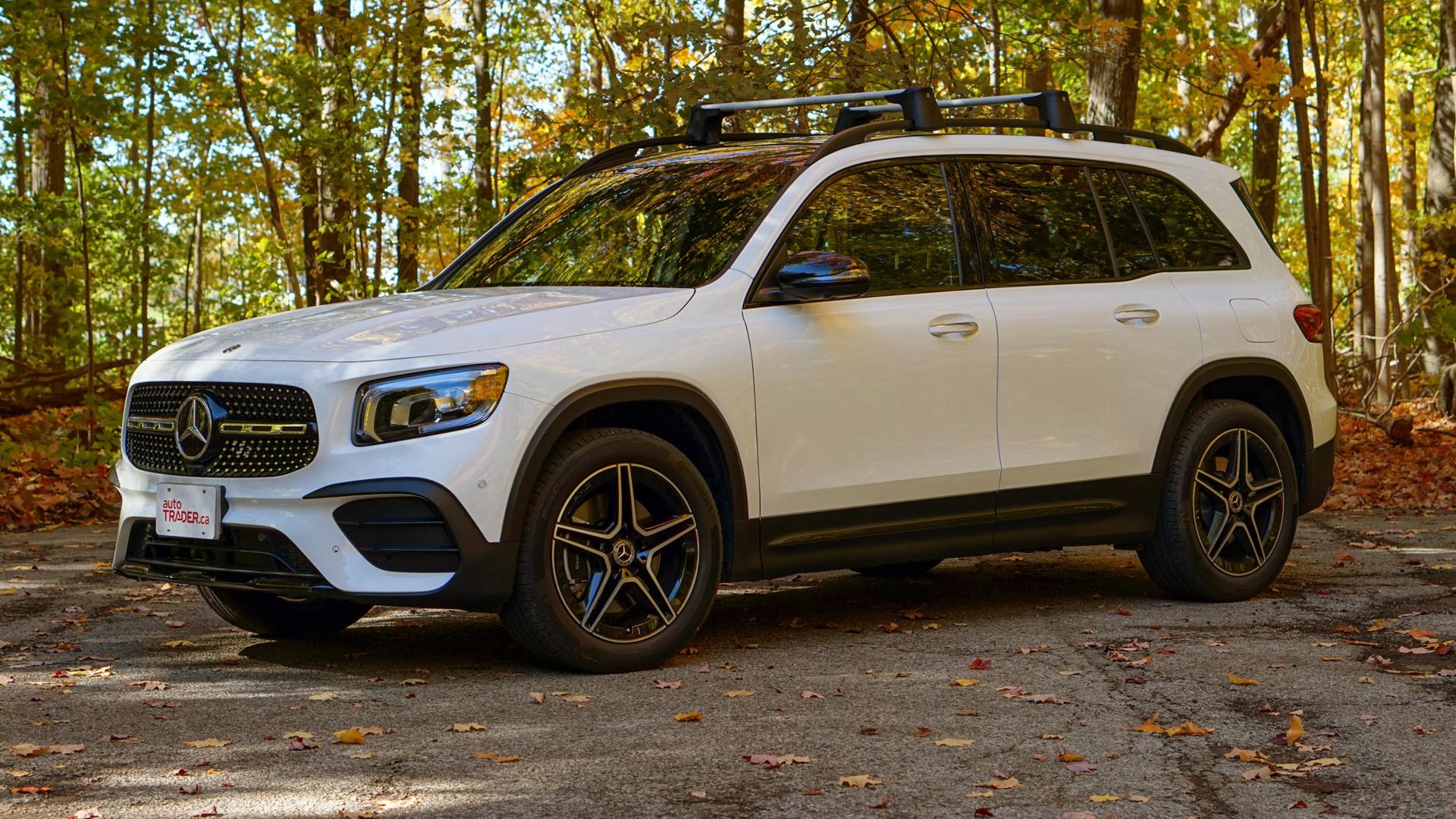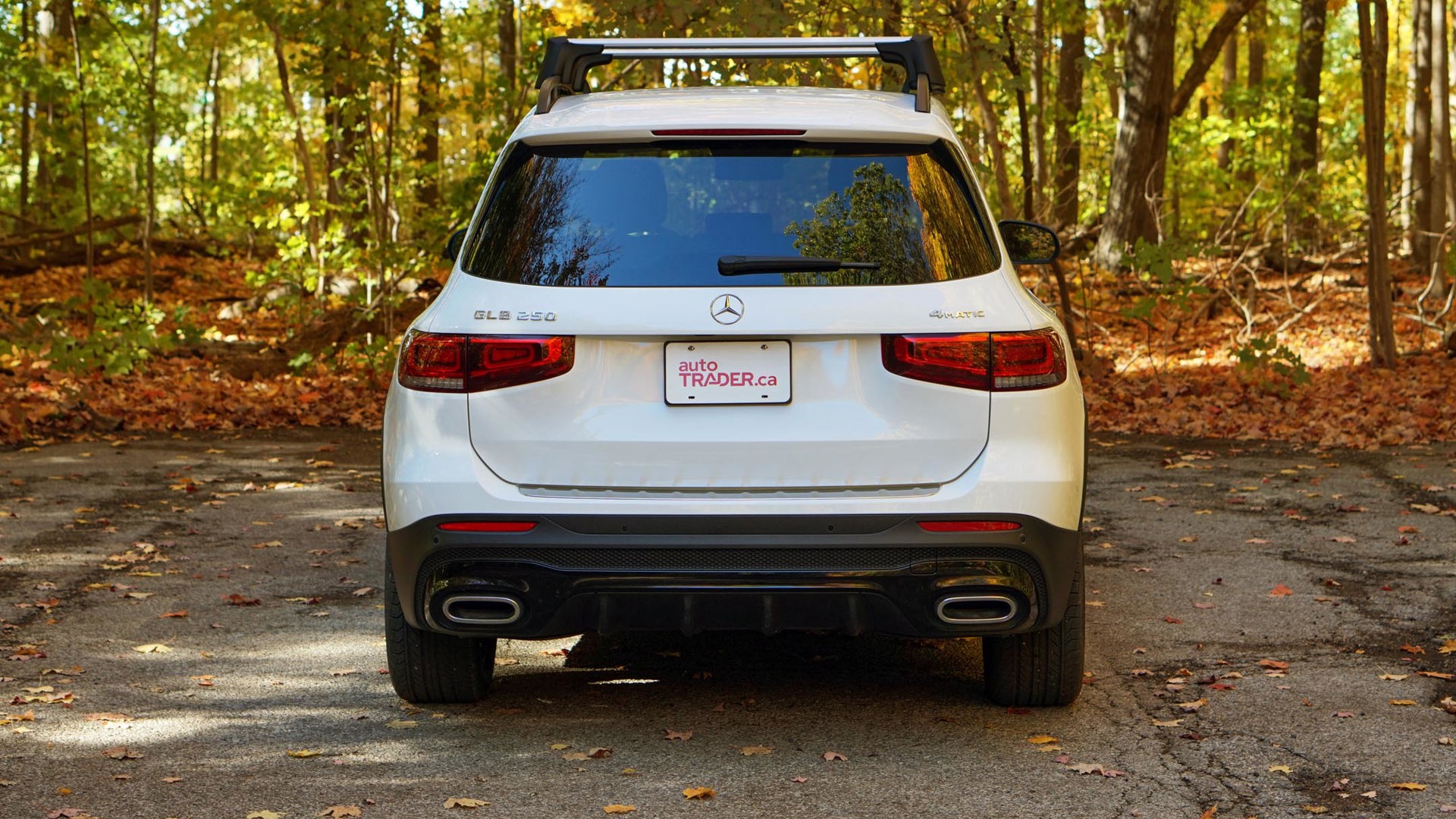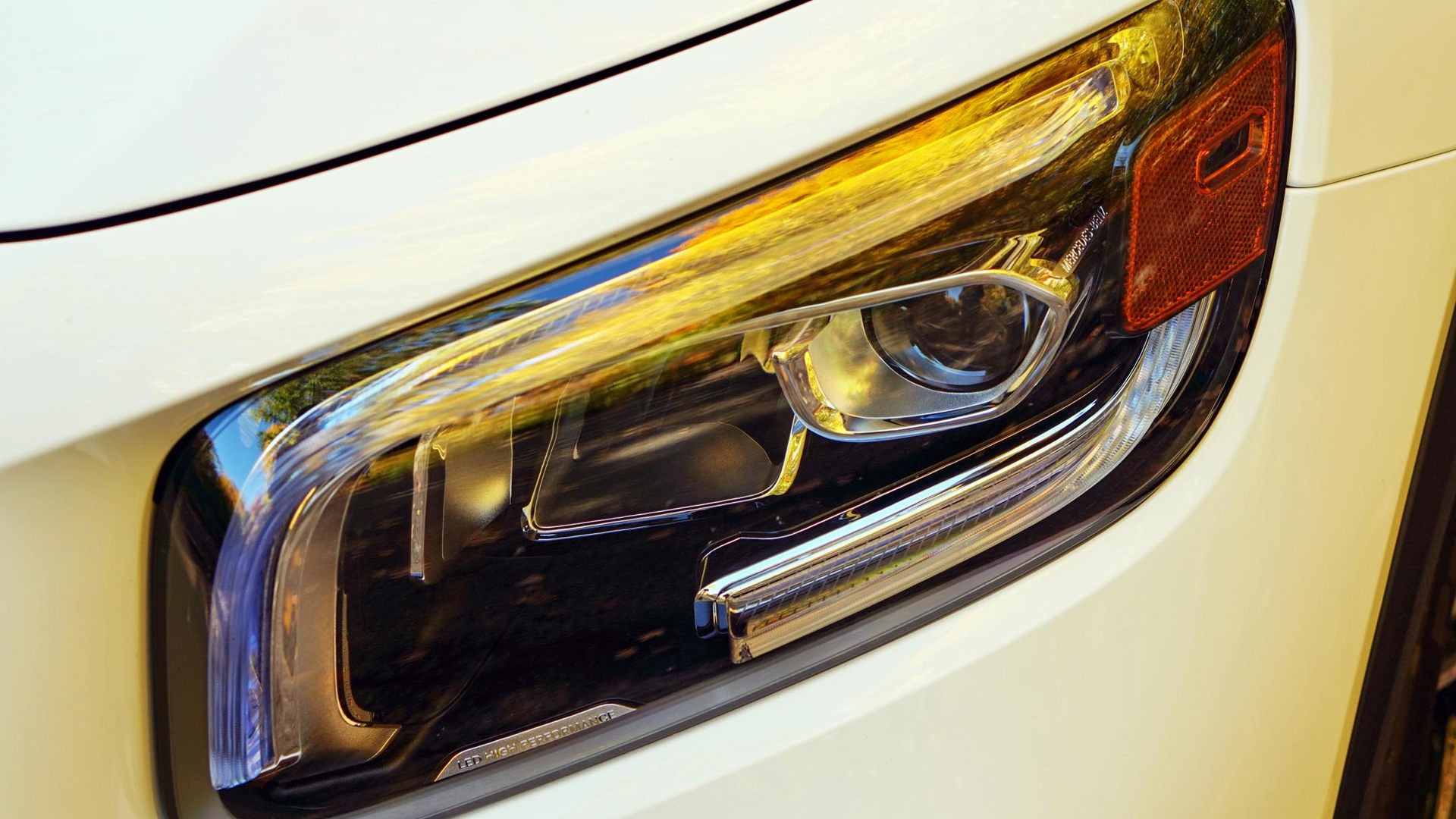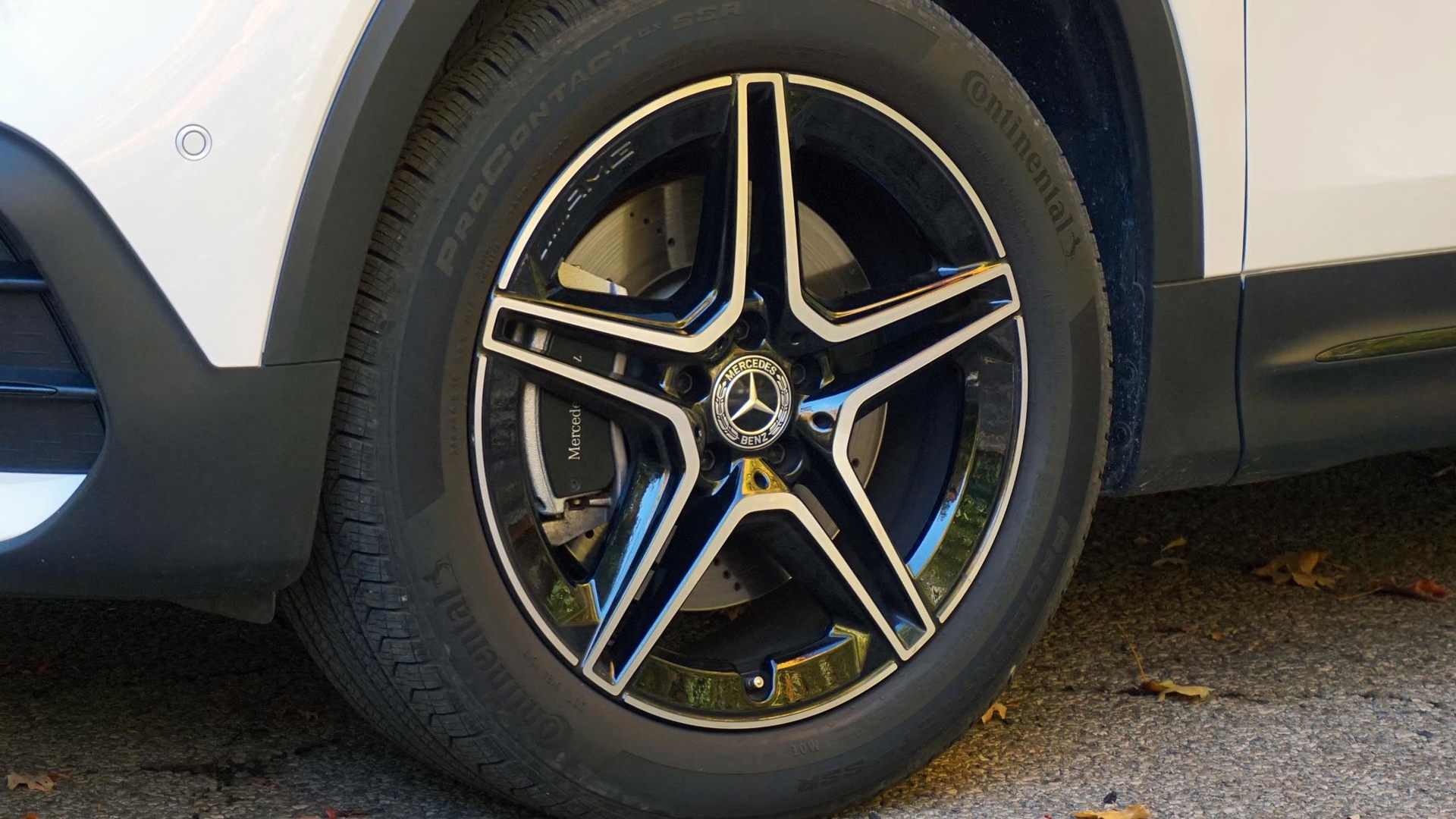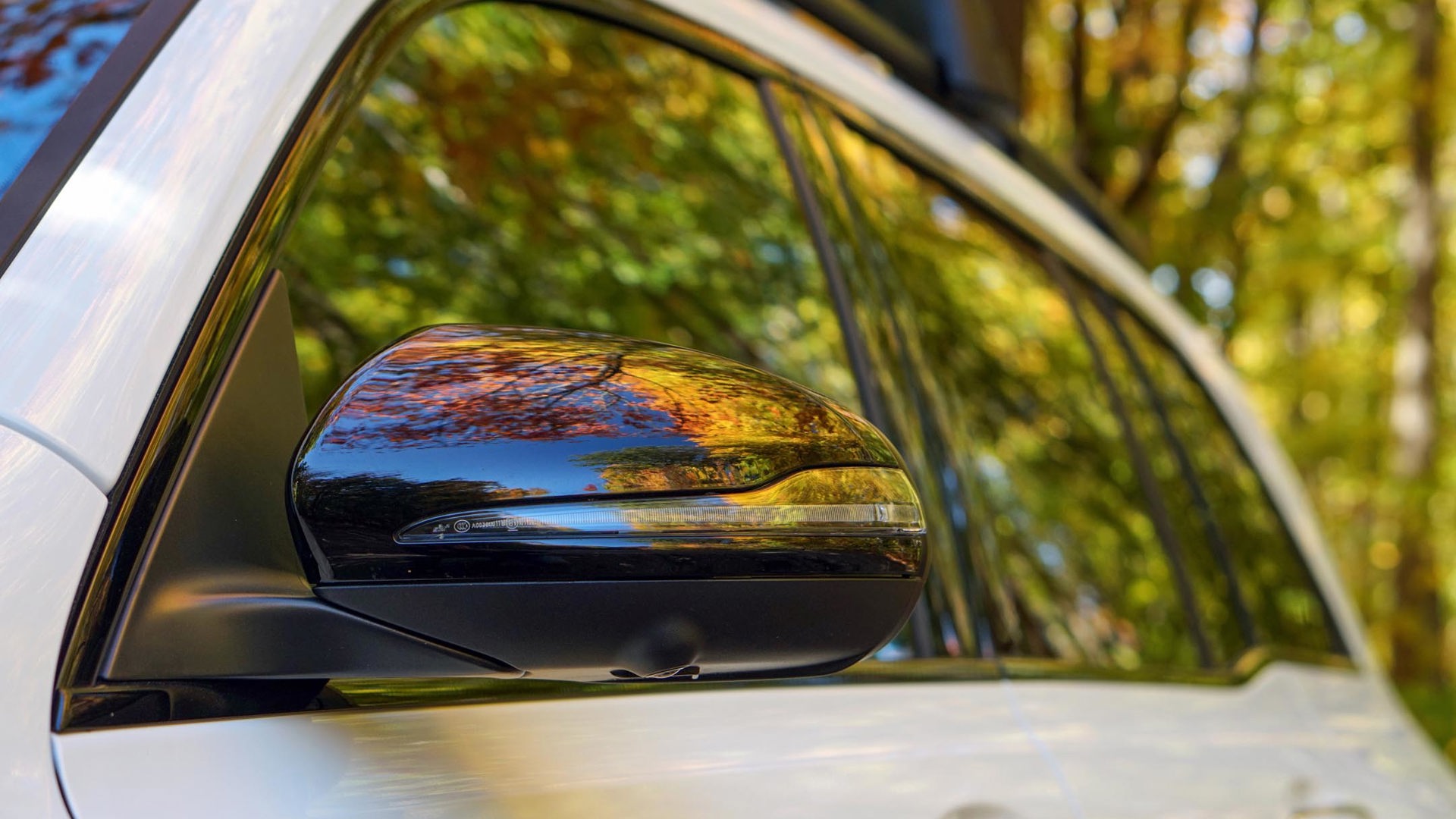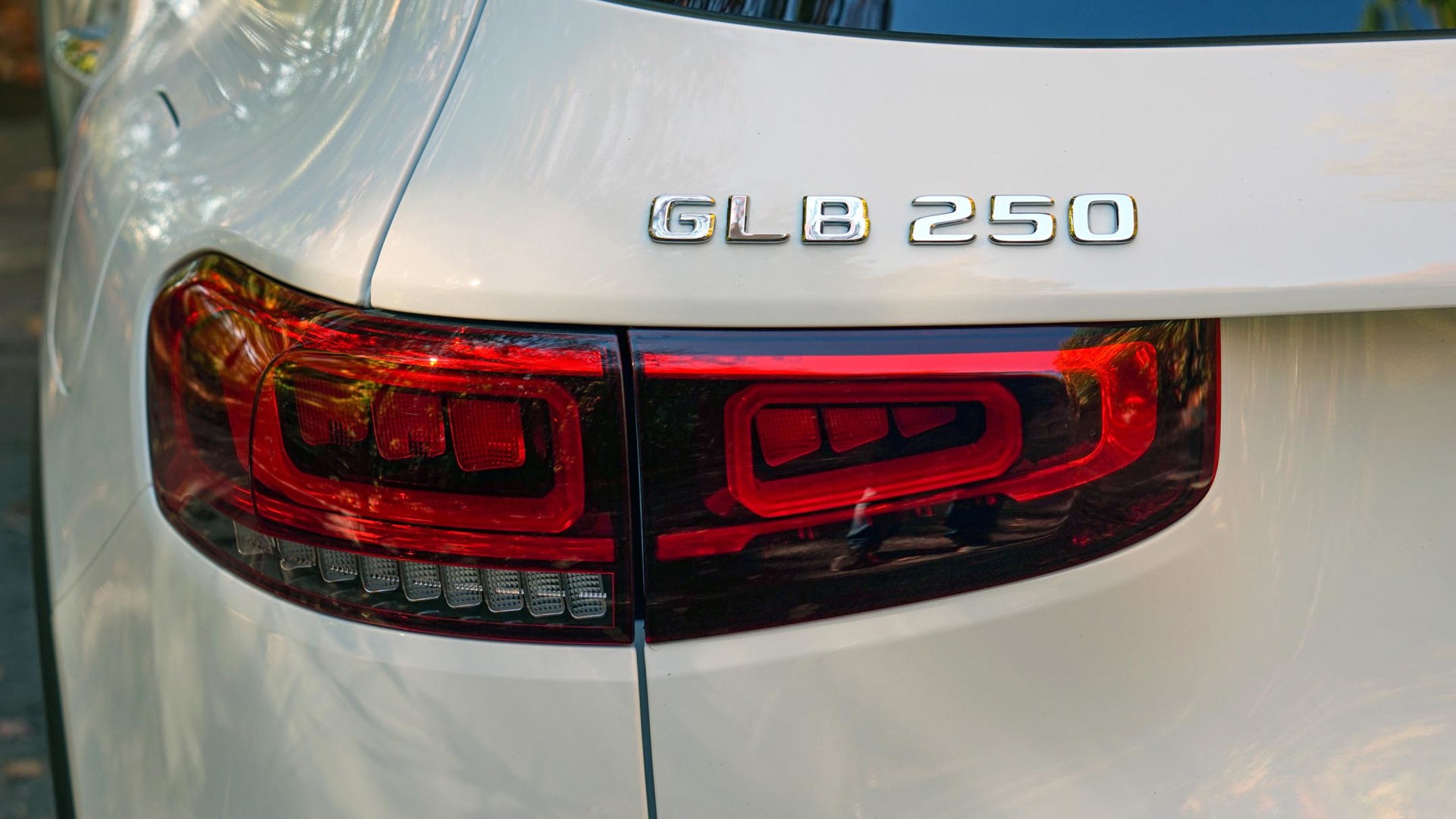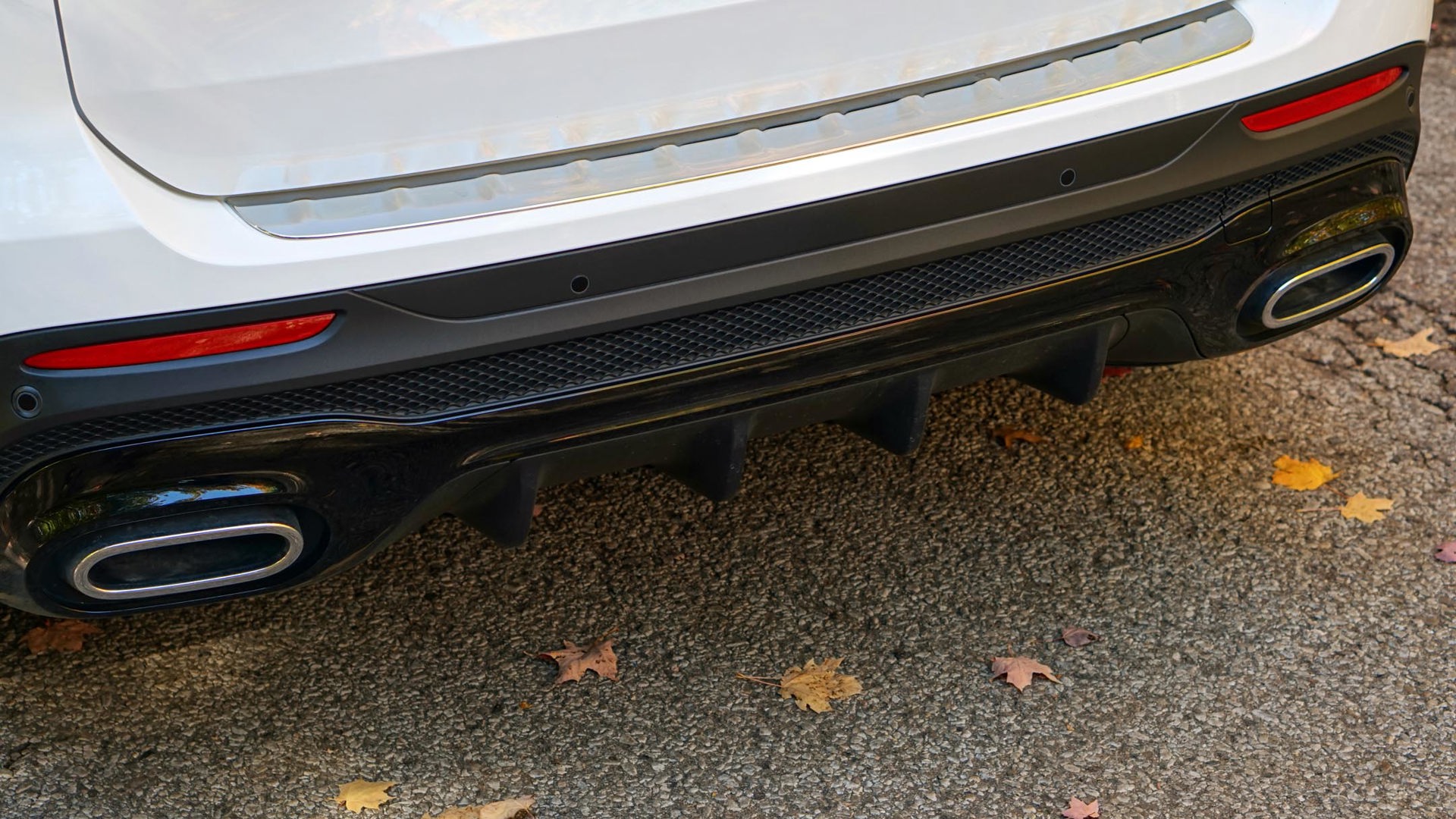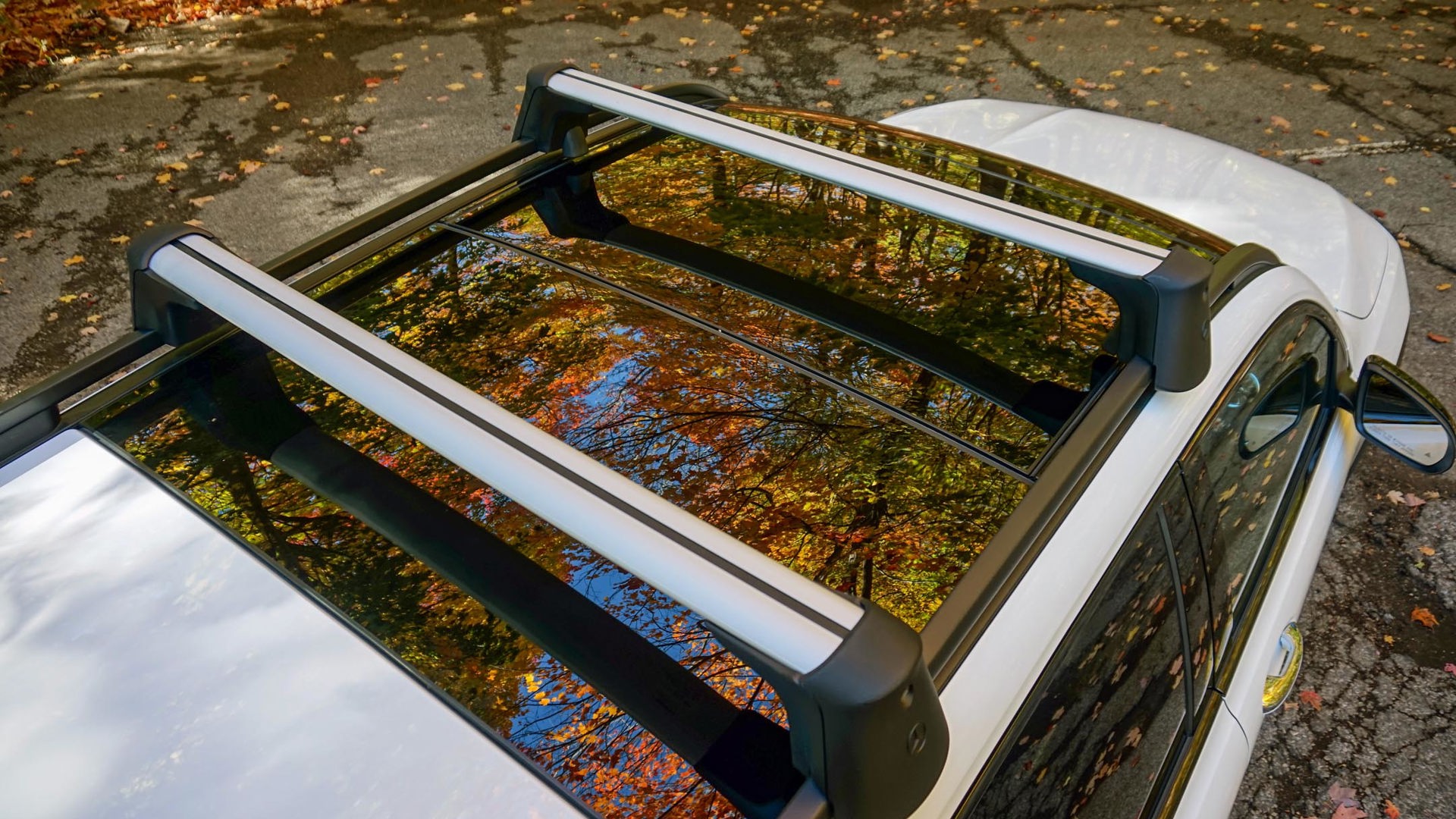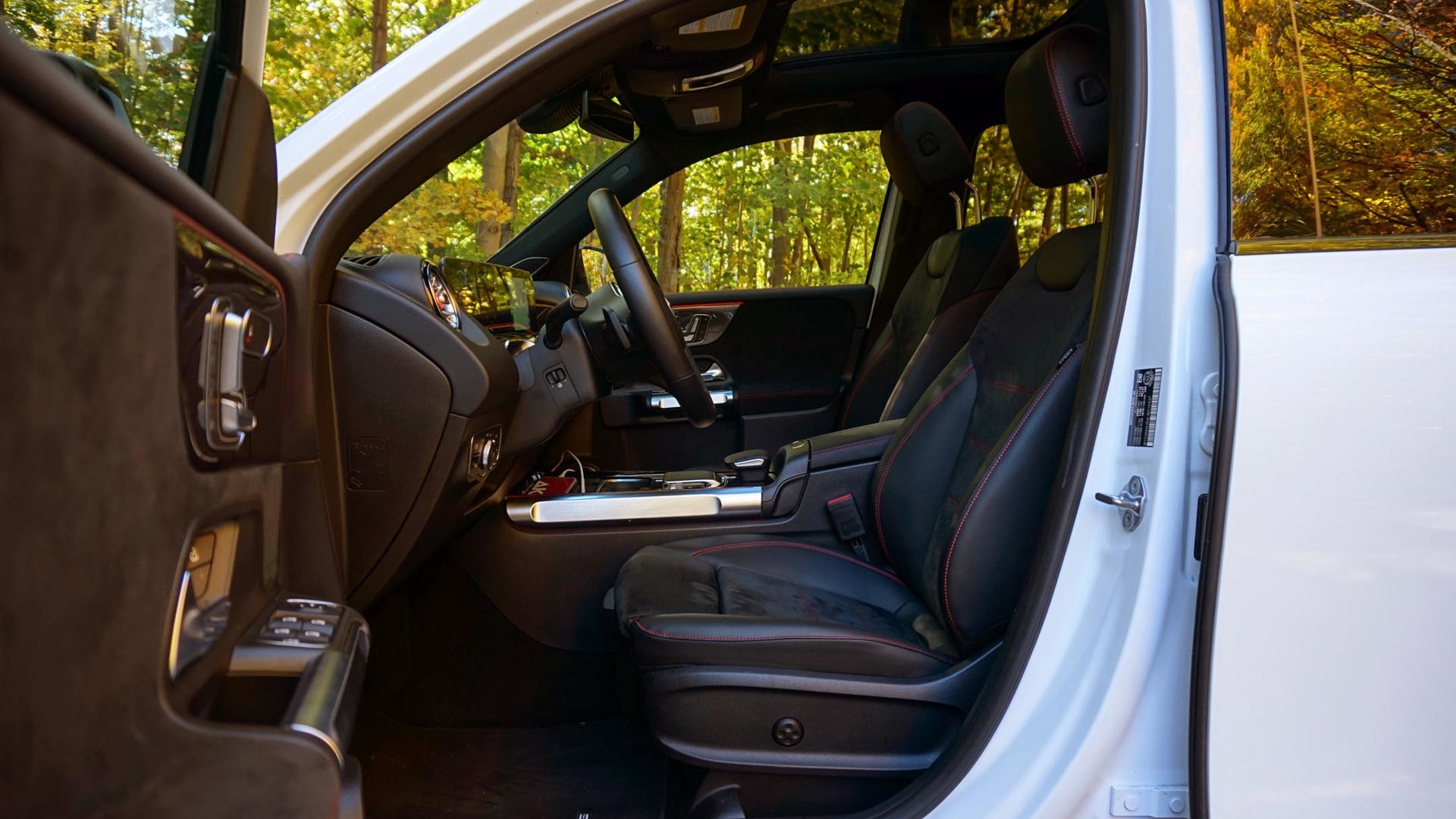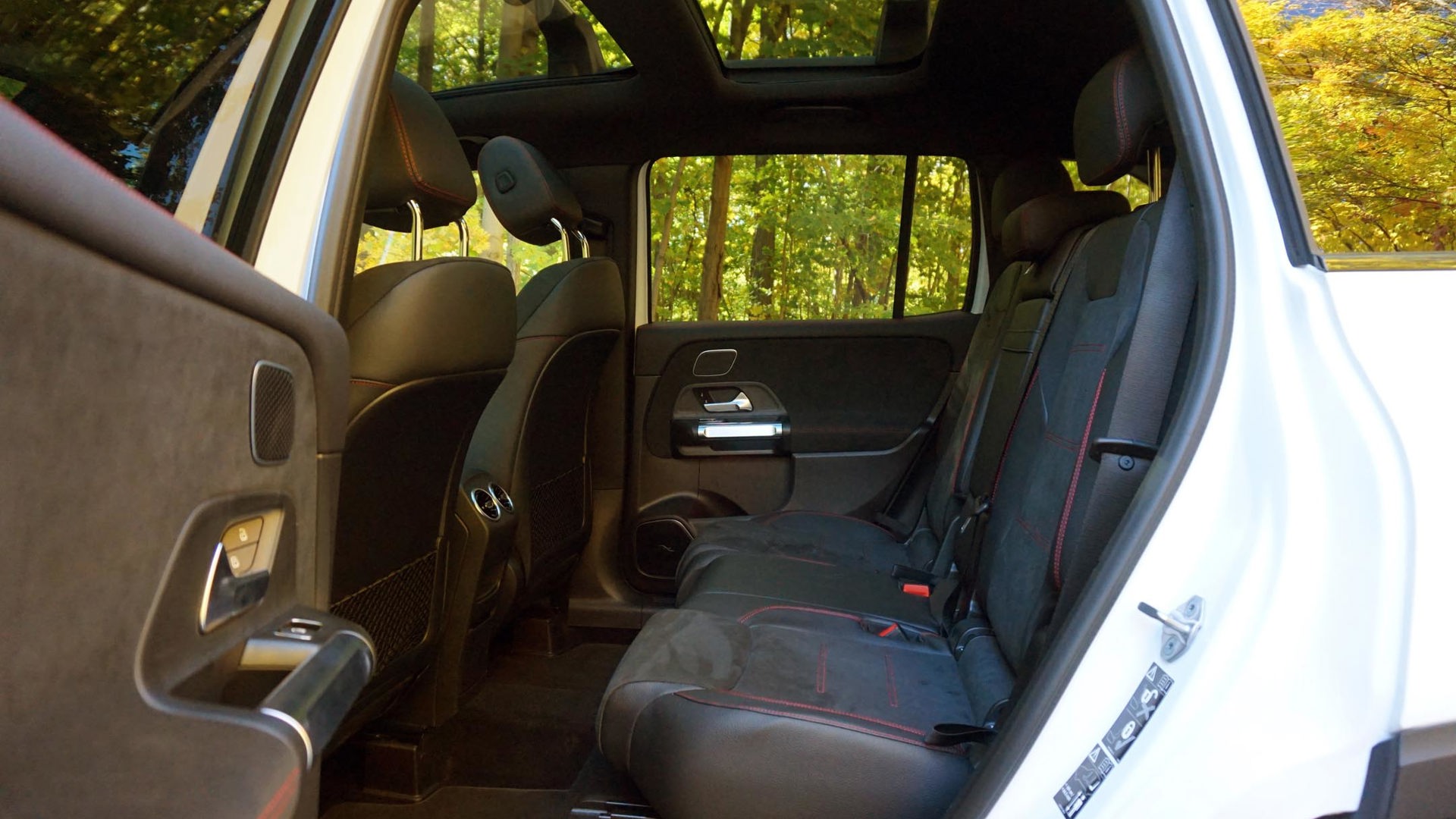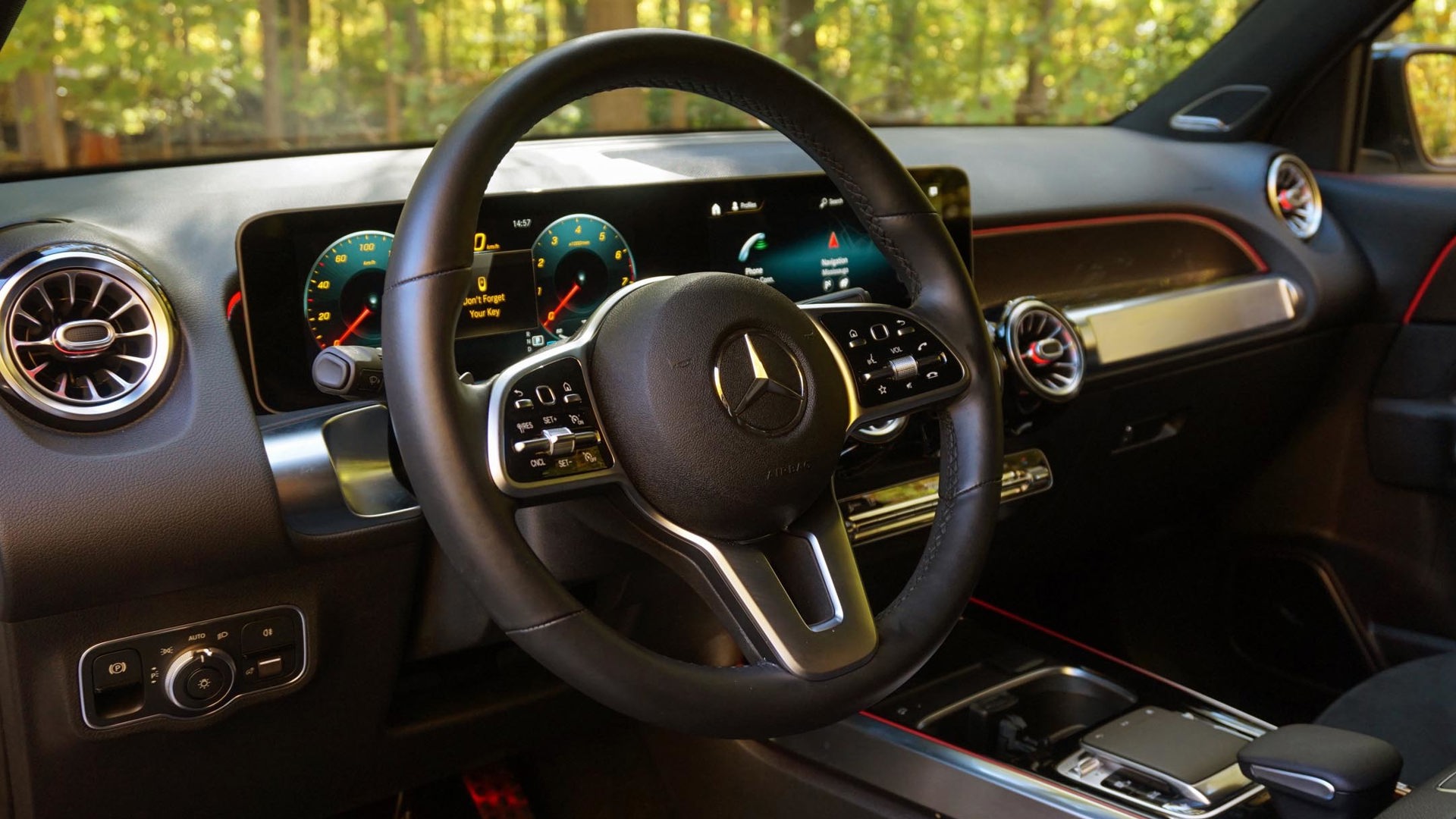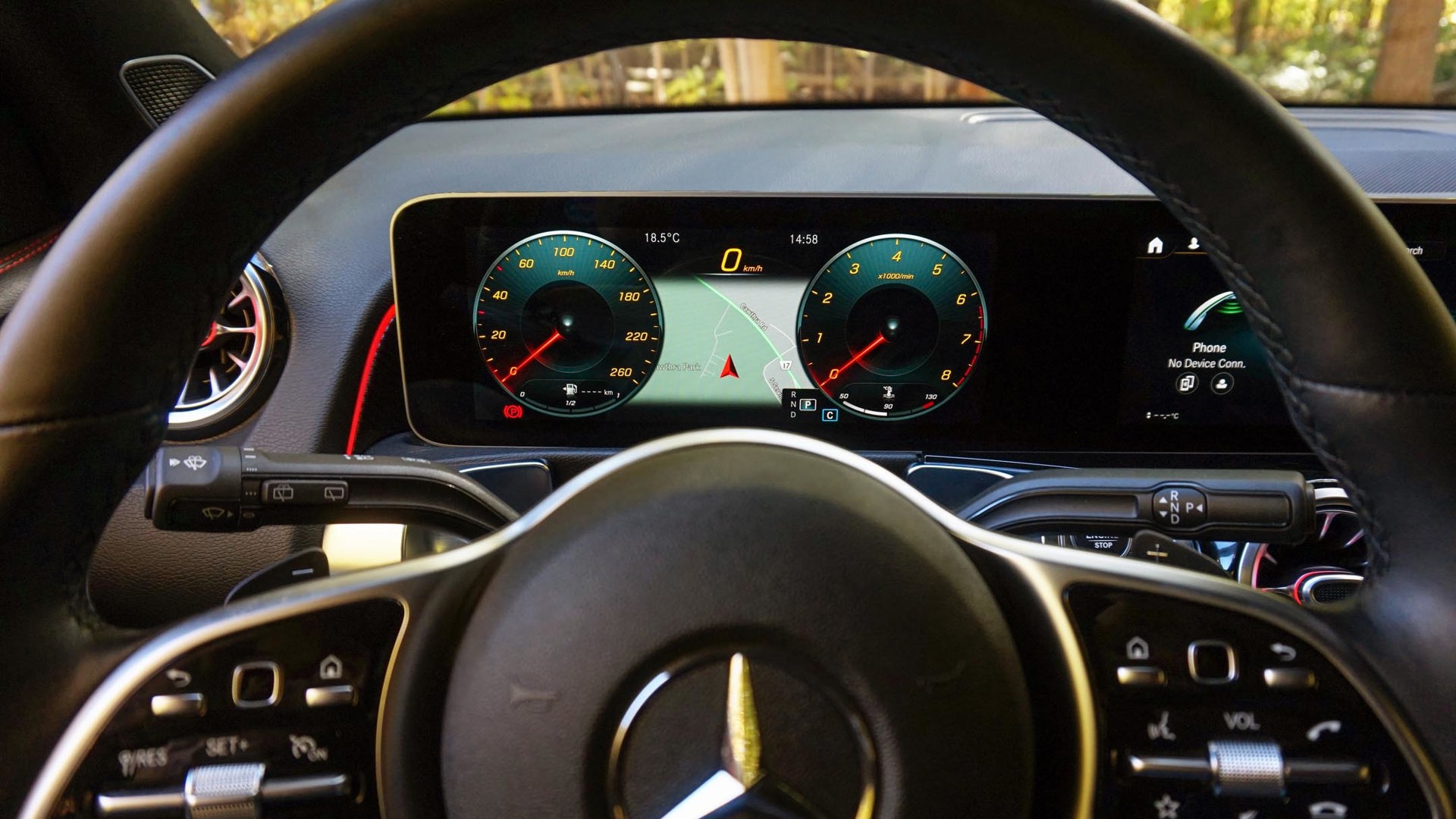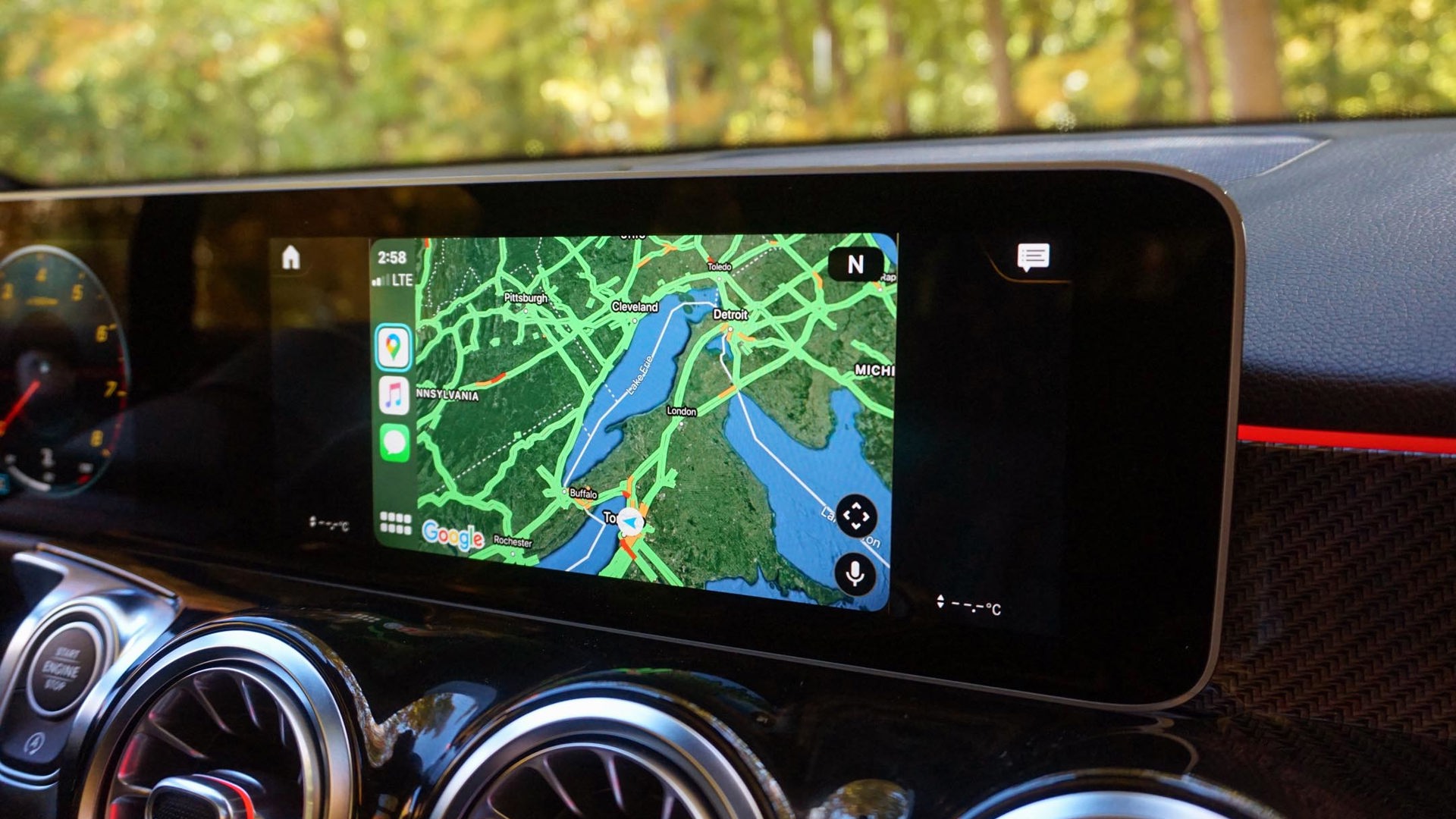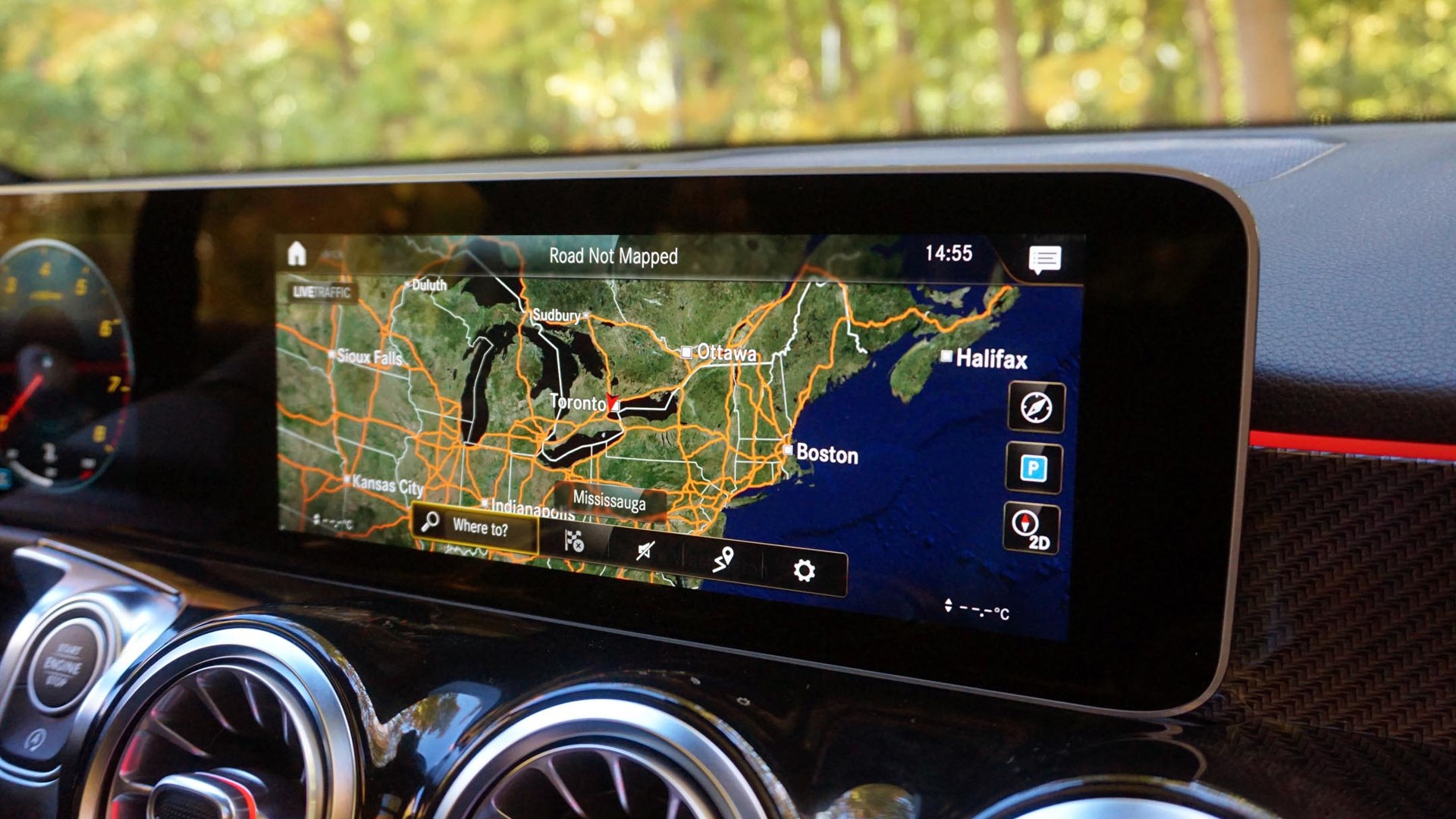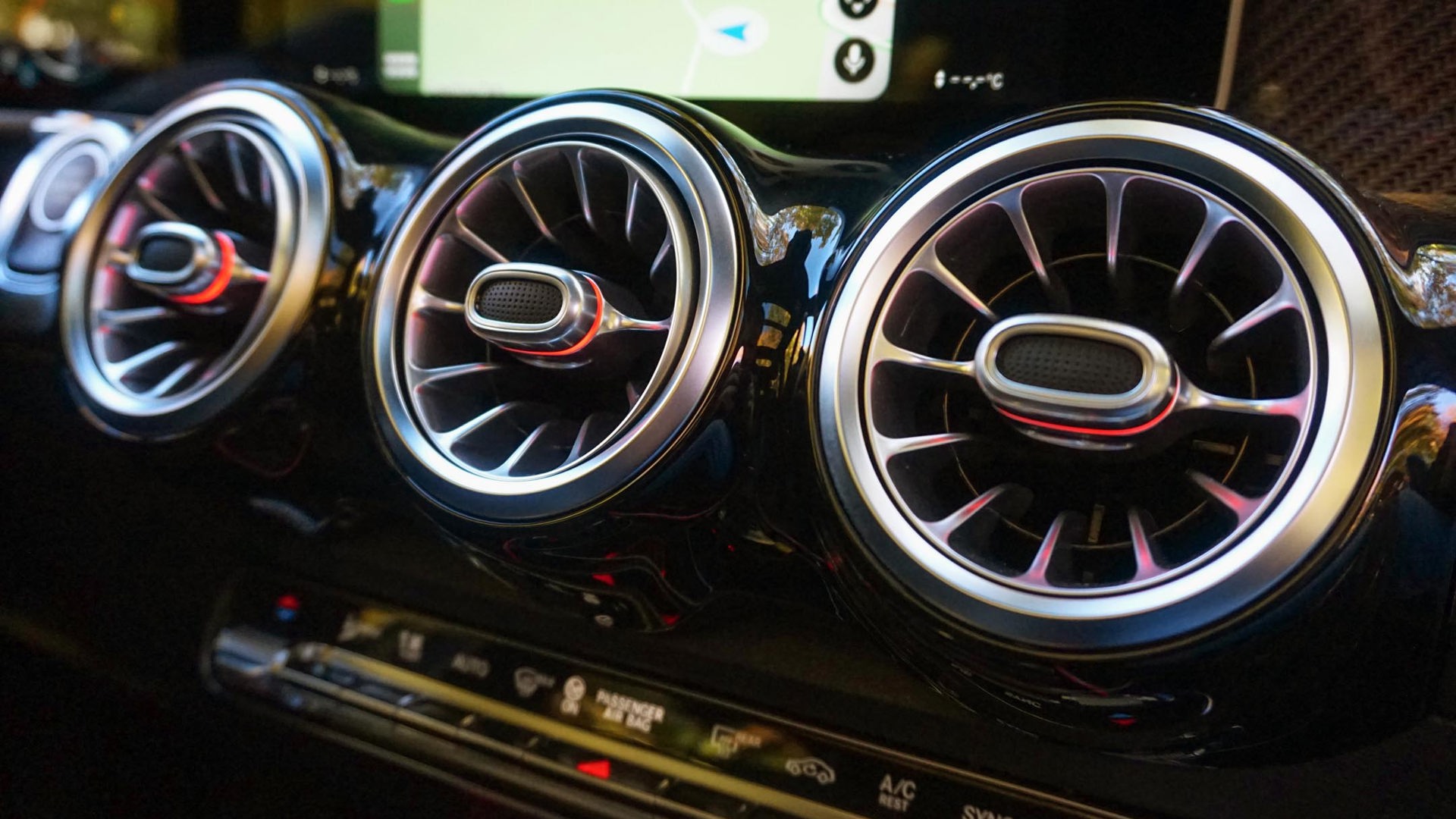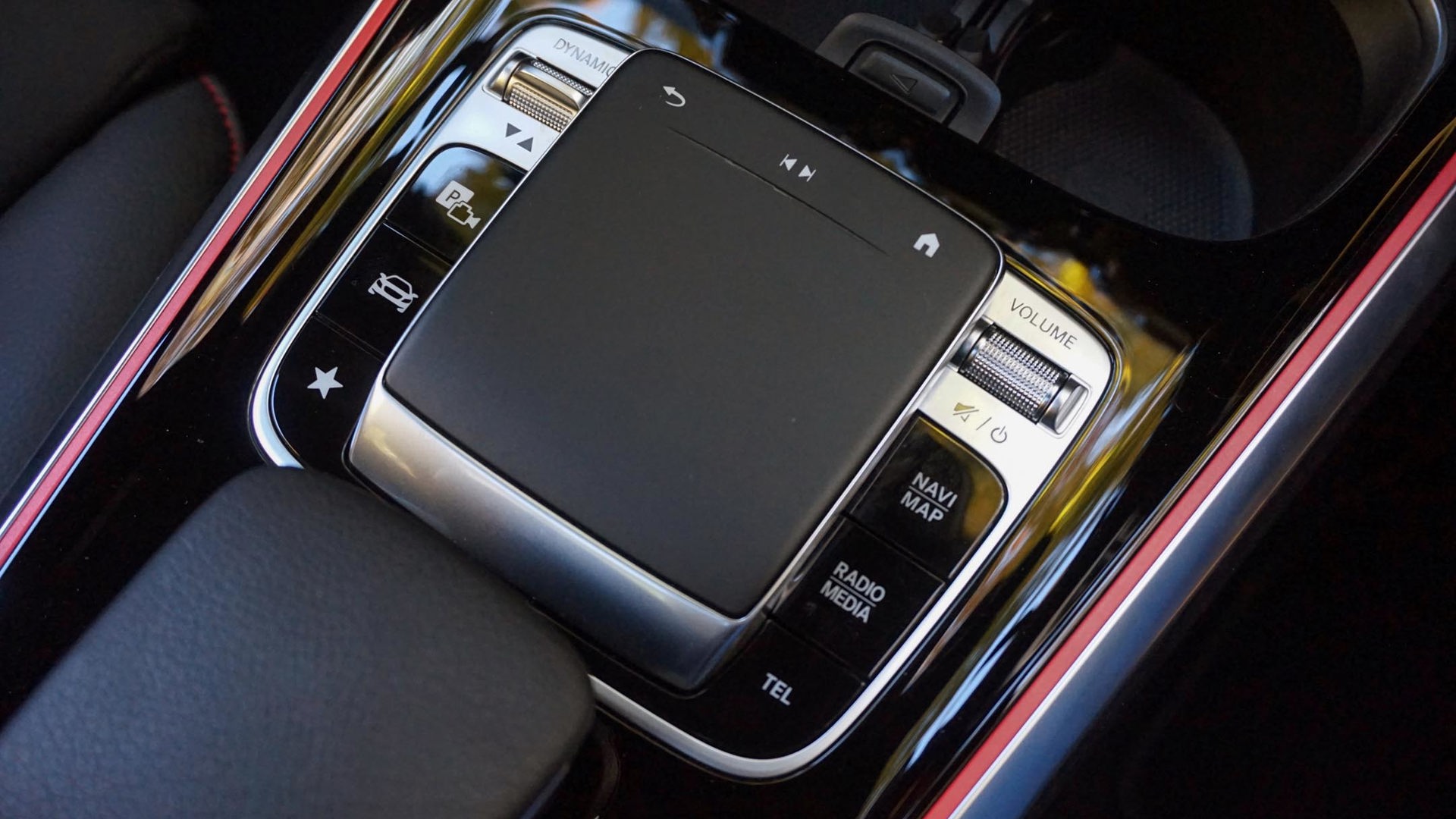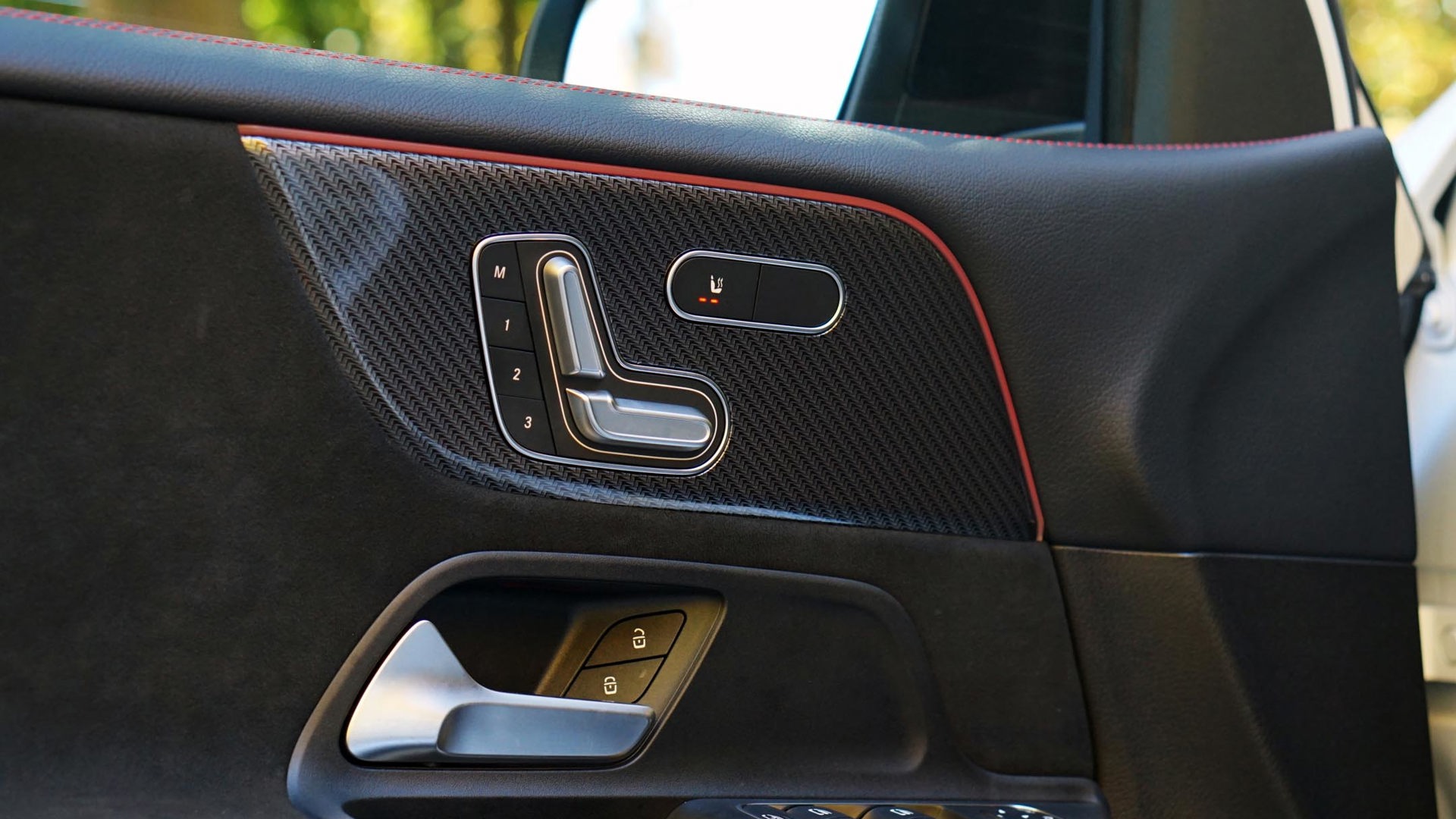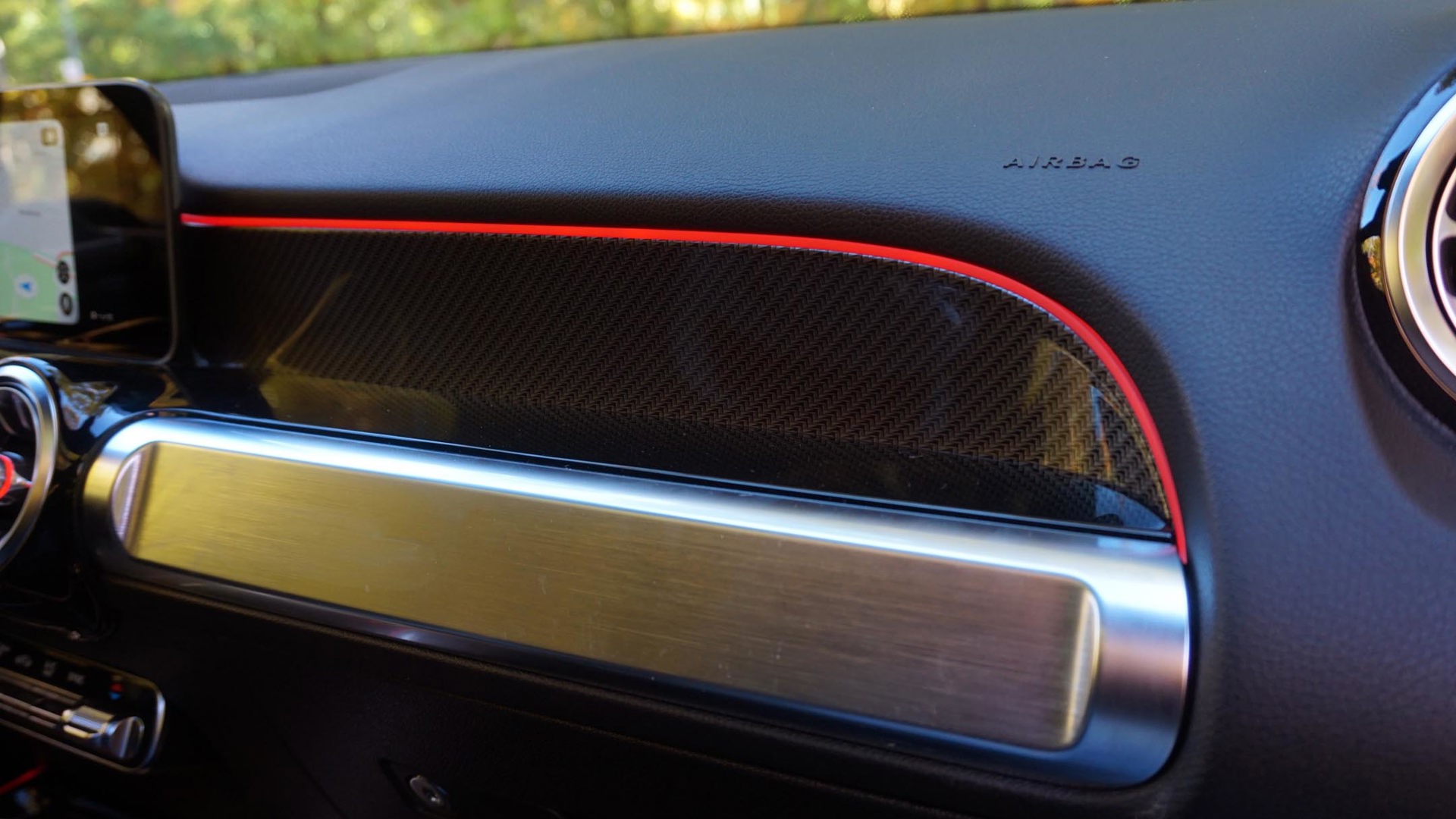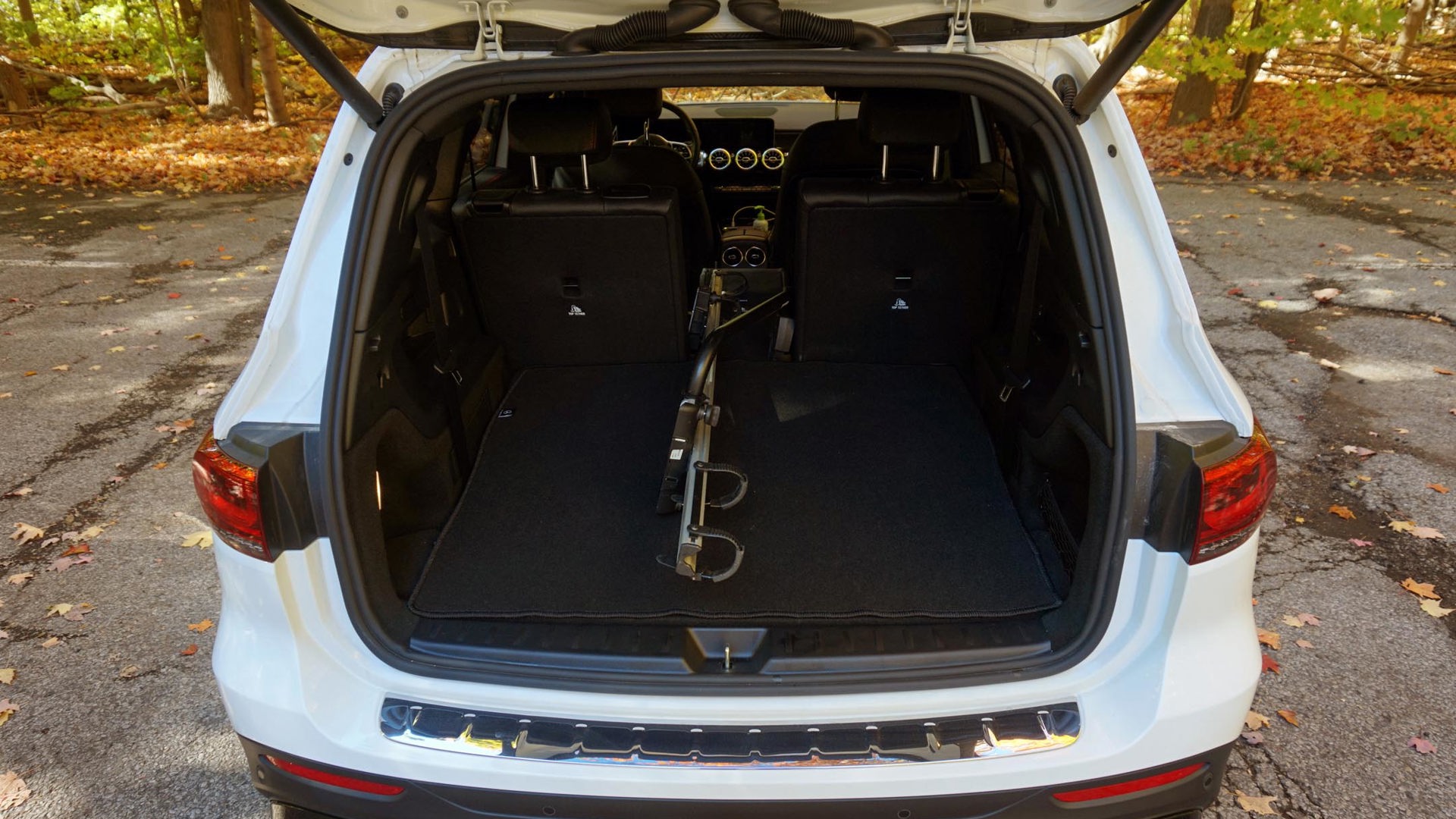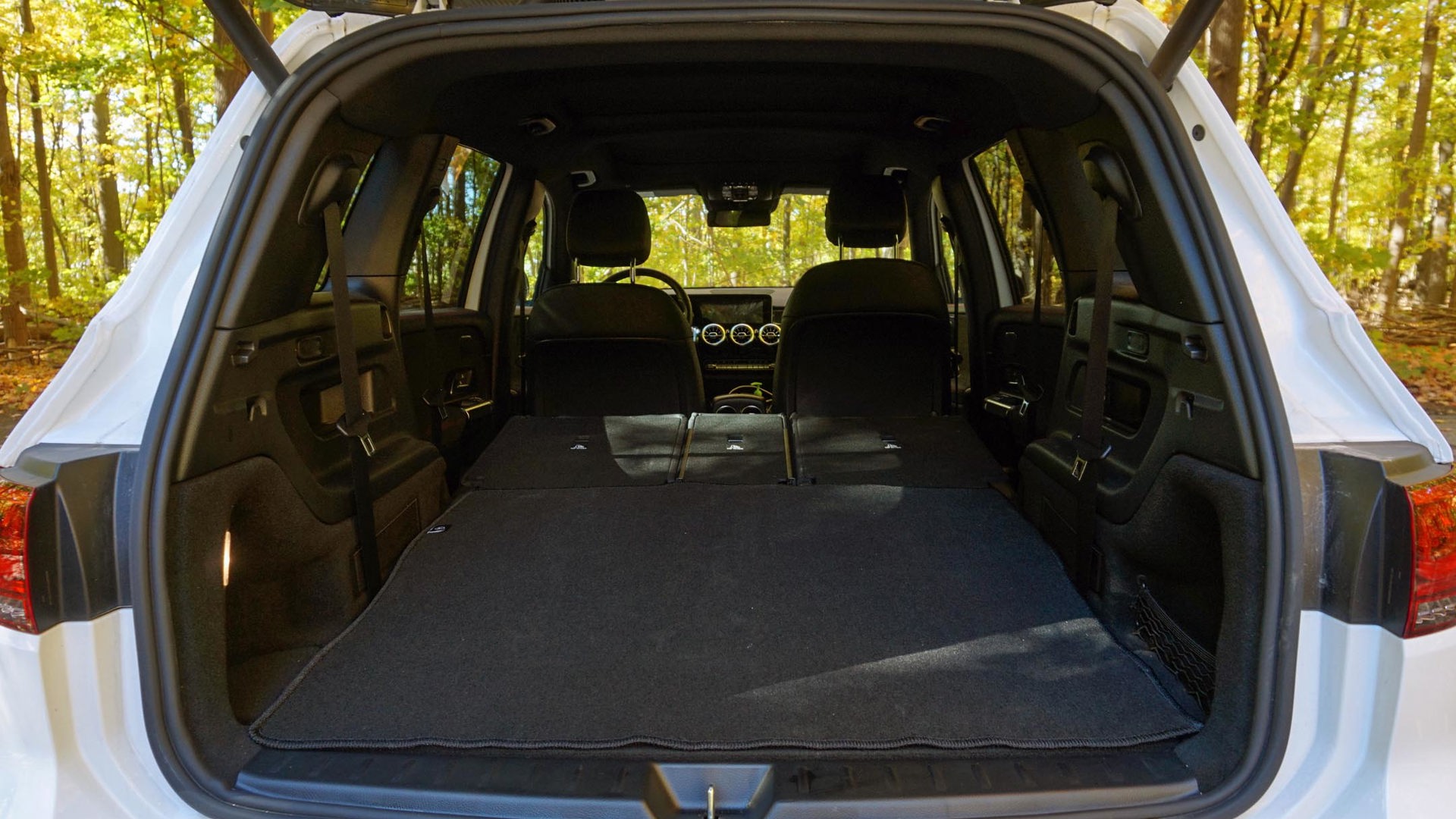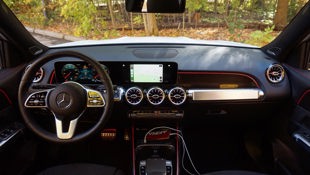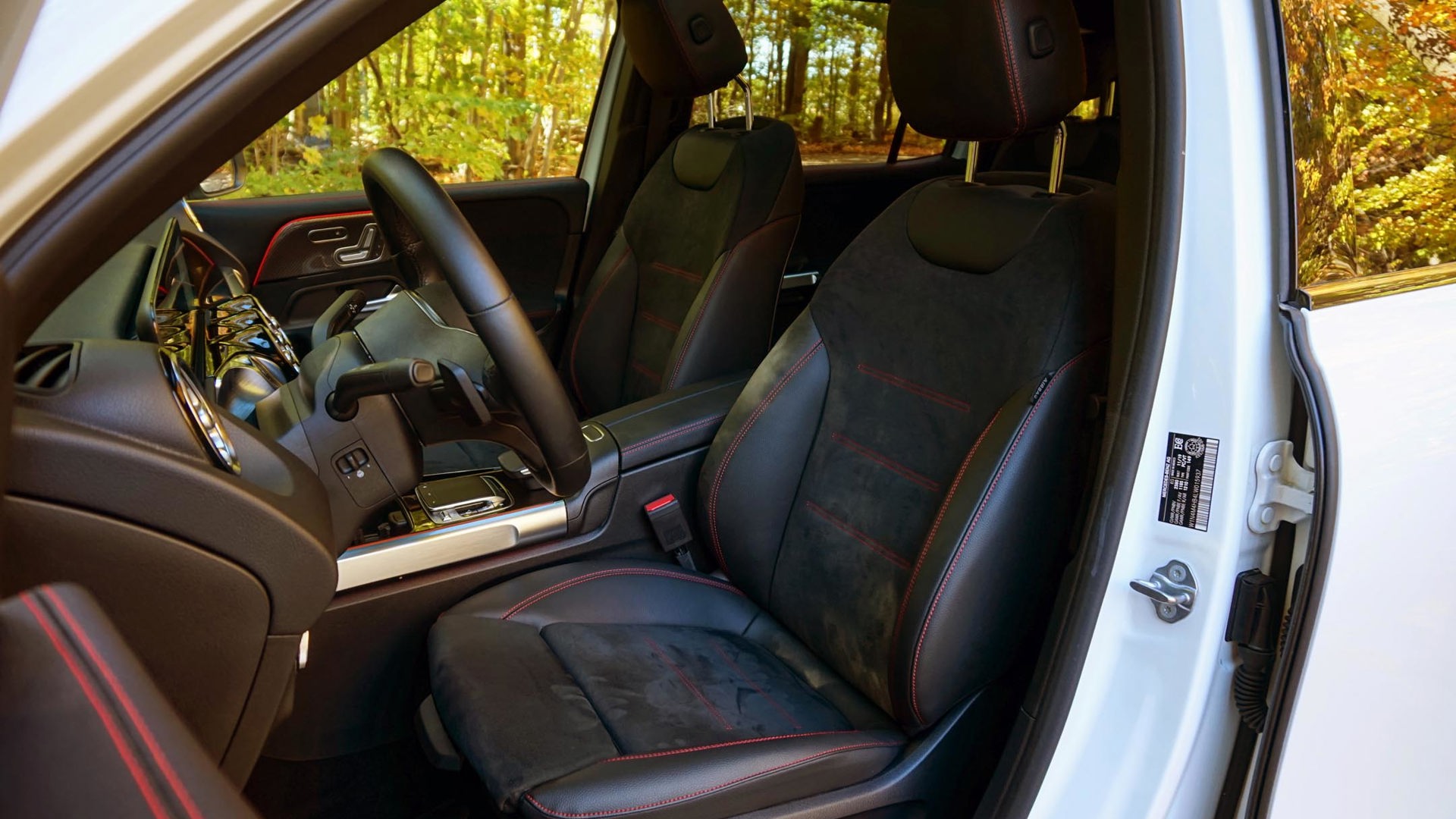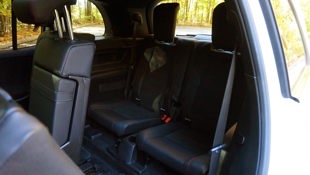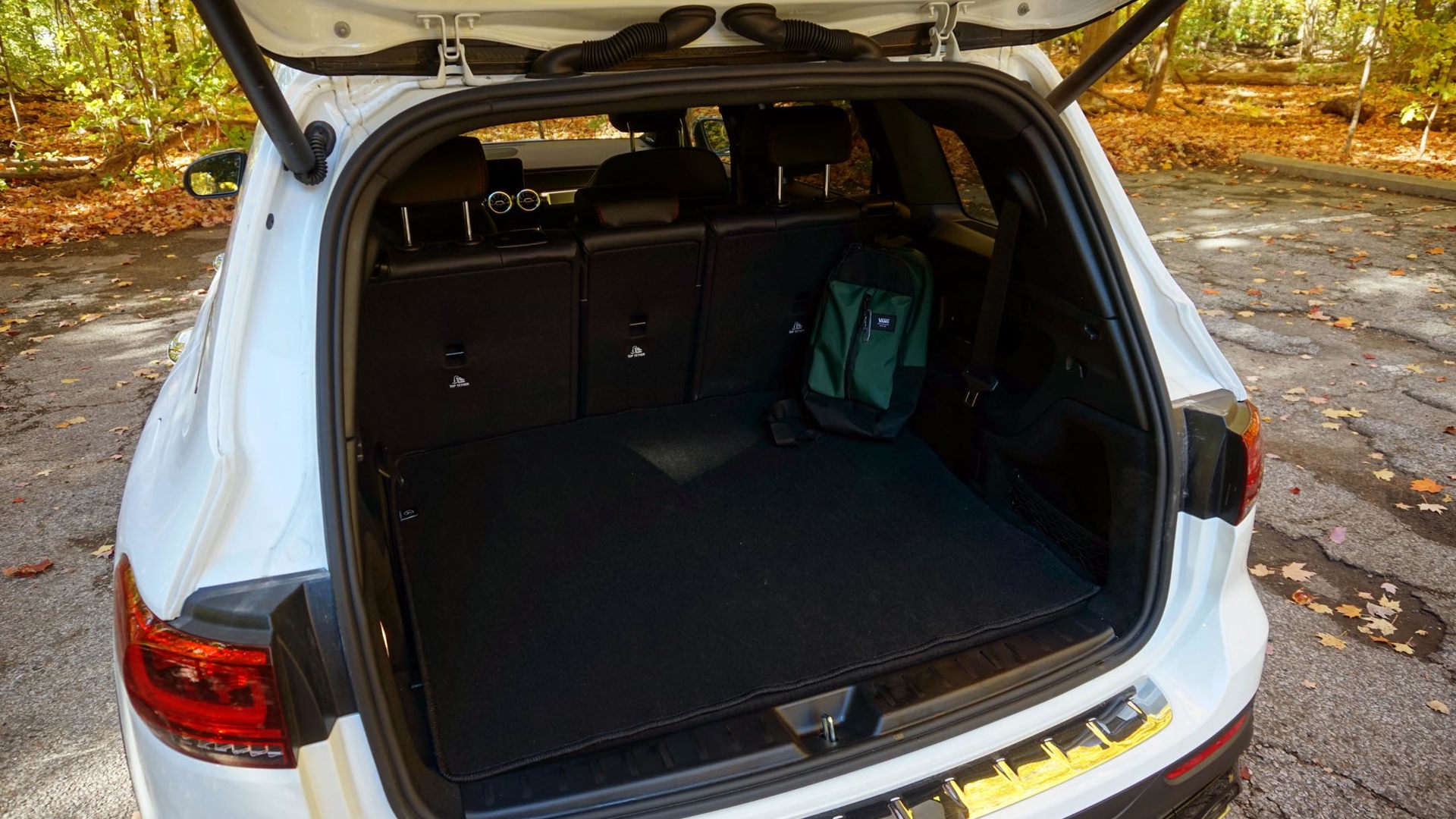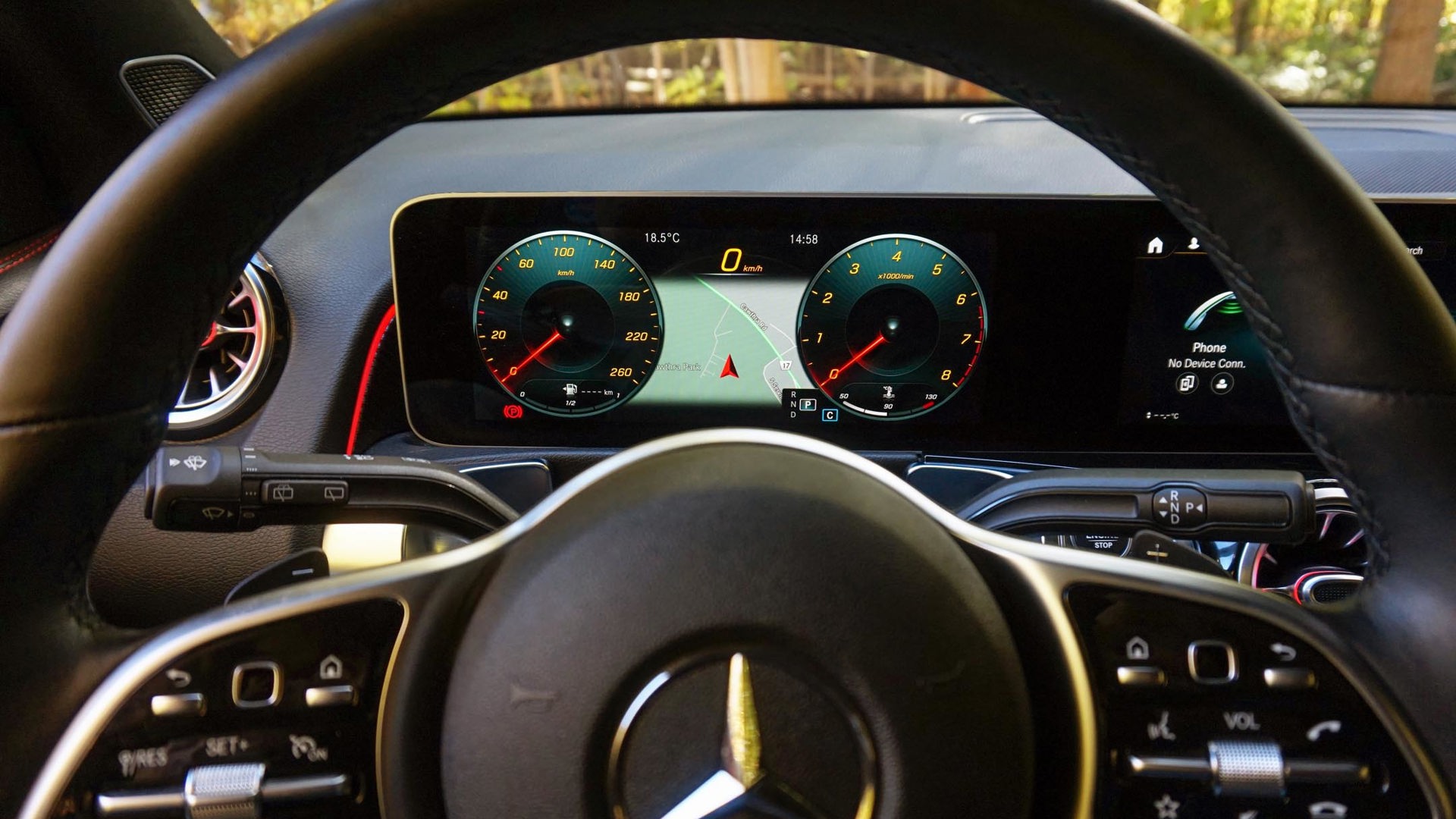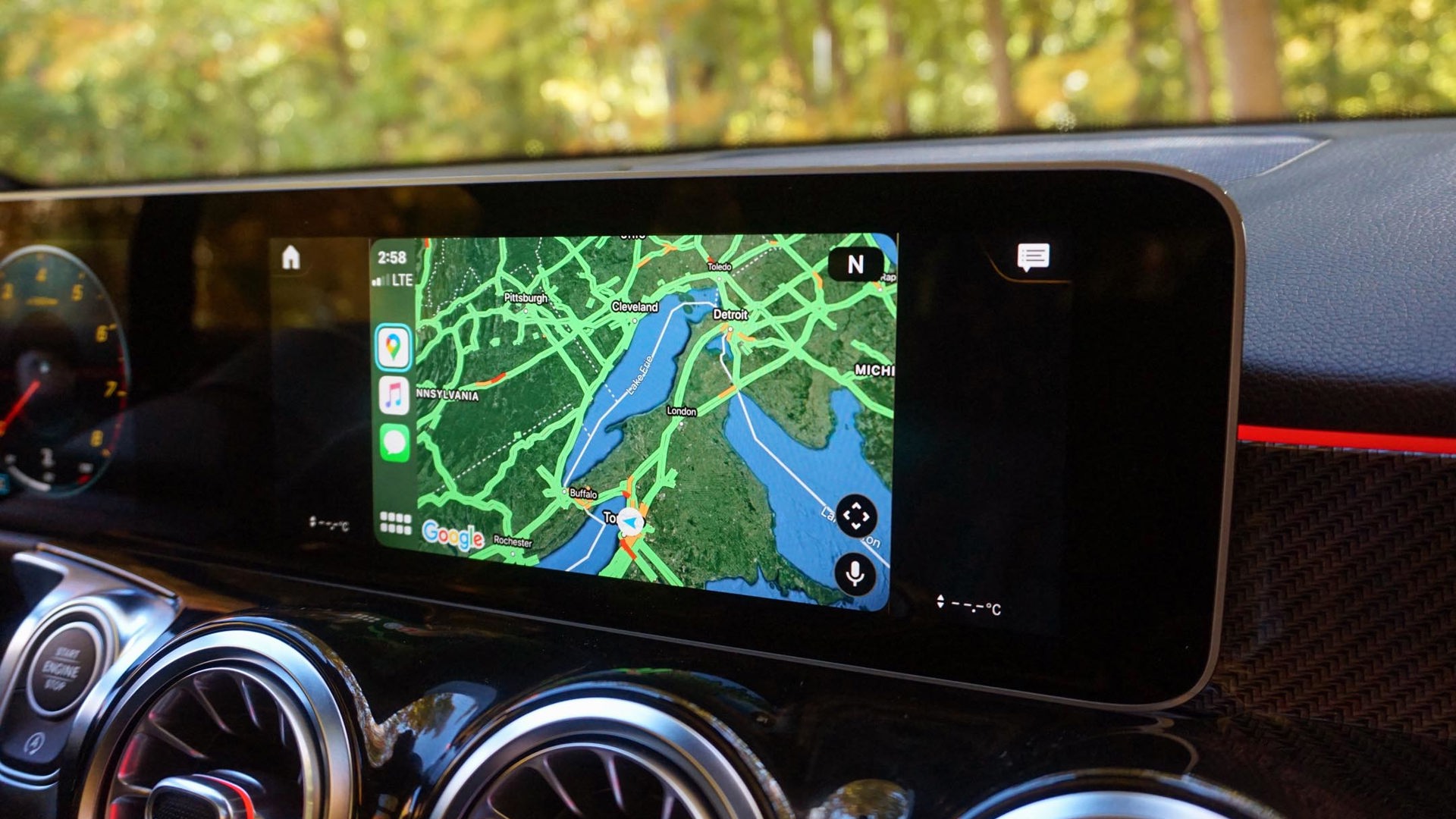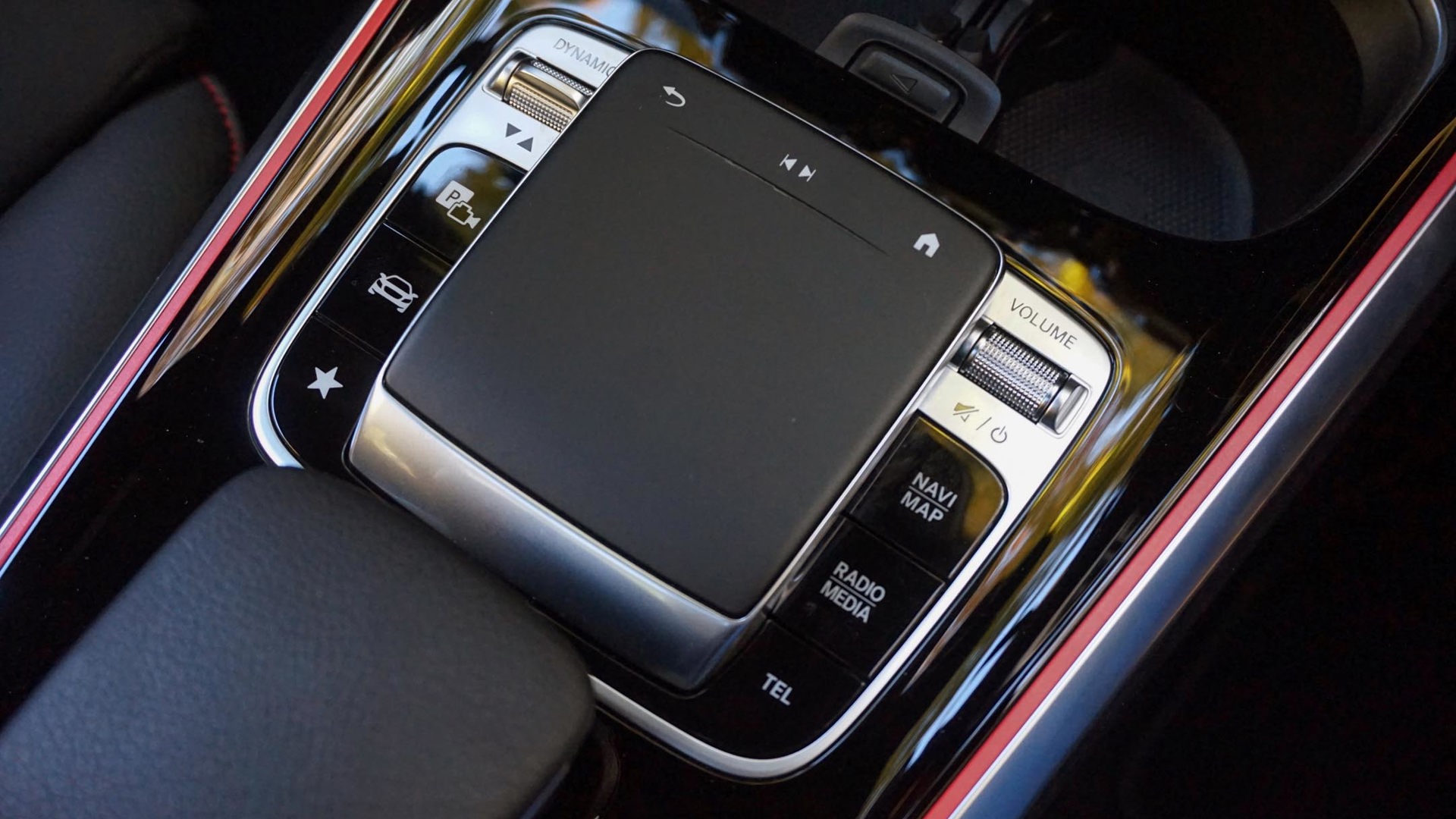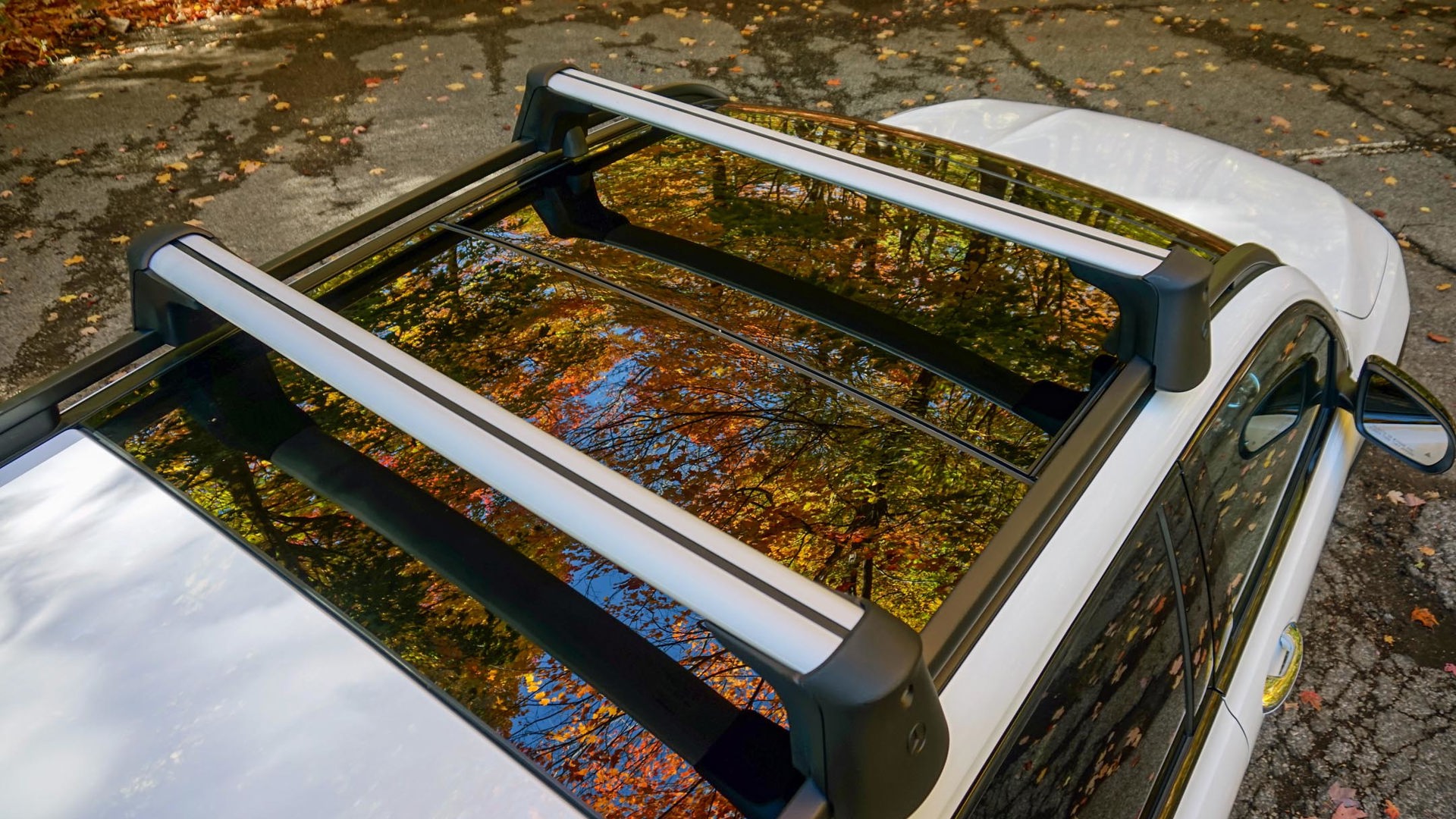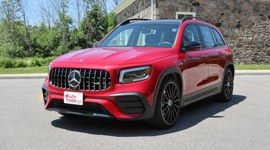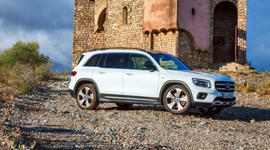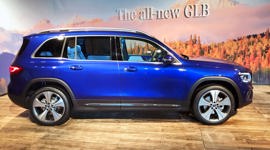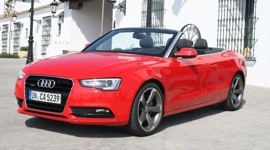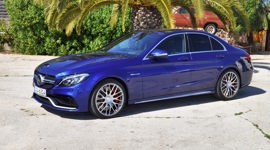 AutoTrader SCORE
AutoTrader SCORE
-
STYLING9/10
-
Safety7/10
-
PRACTICALITY9/10
-
USER-FRIENDLINESS9/10
-
FEATURES8/10
-
POWER9/10
-
COMFORT7/10
-
DRIVING FEEL8/10
-
FUEL ECONOMY8/10
-
VALUE8/10
When shopping for a family hauler, it can be tough to decipher between wants and needs.
Plenty of people want SUVs with three rows of seats these days, even if they don’t need them – at least not with much frequency. (Either way, we’re still big believers in the merits of the minivan here at autoTRADER.ca despite their declining popularity across the country.)
There’s certainly no shortage of fantastic three-row SUVs on the market from both mainstream and premium brands at present, but most of them are as hard on gas as they are to park at the grocery store. Then there’s the 2020 Mercedes-Benz GLB 250, a comparably small sport utility that packs extra seating when it’s needed and a versatile space for a family of four when it’s not.
Styling: 9/10
It’s a quirky-looking SUV to be sure, a by-product of its generous accommodations inside. From the outside, it bears a striking resemblance to the much larger GLS-Class from within the Mercedes lineup, only one that’s had various body panels and windows stretched, pushed, and pulled to make the most of its smaller footprint. It’s best described as different at the very least – and that’s a compliment.
Despite going big on the space inside, the cabin looks like any other Mercedes-Benz, albeit an affordable one. The auto industry has long worked with a sliding scale of materials; it’s the reason why most of the stuff inside the Toyota Camry looks and feels a little nicer than what’s in the Corolla. However, the disparity stands out just a little more with a premium brand such as this, the materials here coming up well short of the flagship S-Class despite looking the part from afar.
Practicality: 9/10
Don’t be fooled by this new GLB-Class: it manages to make excellent use of its relatively compact dimensions. From tip to tail, it’s similar in size to the Honda CR-V, stretching 4,634 mm (182 in) overall. That might not seem like much space to work with, but the brand’s designers and engineers deserve quite a bit of credit for what they’ve managed to put together here.
The cabin is noticeably more narrow than a conventional three-row SUV, but occupants of the first and second sets of seats certainly won’t be complaining about the space available to them. Only those seated in the optional third row, a $1,300 upgrade, are left with cozy confines, though the twin seats are perfectly suitable for pre-teen children when extended family is in town (there’s also a pair of USB-C charging ports back there to keep devices charged and kids happy).
When the extra seats aren’t needed – and let’s face it; they usually aren’t – they simply stow in the floor, providing ample cargo room for a family of four to make the trip to the cottage. There’s slightly less space than models without the third row, but the difference isn’t enough to make it worth ordering the GLB-Class in a five-seat configuration. And since the second row folds in a 40/20/40 split, long items can be stowed inside with ample room for four people, too.
User Friendliness: 9/10
With standard roof rails, a set of crossbars like the ones fitted to our tester only enhances this SUV’s versatility. While wind noise is substantially worsened as a result, it’s a worthy sacrifice for the additional storage provided for skis, bikes, or cargo boxes. The door sills could be larger in order to provide better standing room when accessing what’s up top – Subaru got it right with the Forester and Outback, both of which feature wide perches inside the rear doors for exactly that purpose – but the relatively squat overall height makes it manageable with two feet on terra firma.
The 201 mm (7.9 in) it stands from the ground means the GLB 250 isn’t much good for traversing trails, but it’s incredibly easy to enter and exit as a result. No need to climb up and into this right-sized SUV; a simple lateral motion is all it takes instead. Better still, the doors extend to the bottom of the rocker panels to protect pant legs from collecting salt and road grime on the way in or out.
With disproportionately large door glass, sightlines of what’s happening around the vehicle are second to none, while the power-adjustable front seats ensure anyone who occupies them can make the most of the views outside (both chairs feature memory settings, too). Finding the ideal seating position took a little longer than normal during testing, though it had more to do with the vertical nature of the digital display that’s in place of a conventional gauge cluster than the seats themselves.
While simple enough to get used to, it’s an adjustment in orientation moving from the hooded gauge pod found in most vehicles on the road to a flat panel that stands at almost a perfect 90 degrees. In the case of the GLB 250 tested here, the standard twin seven-inch displays were replaced with optional 12.25-inch screens – one in front of the driver, and the other atop the centre stack for infotainment duty. Both are bright and crisp, with sharp graphics and good response to inputs.
Features: 8/10
The infotainment interface employed by Mercedes-Benz is simple enough, though much like the Mercedes-AMG GLC 43 tested recently, it’s stripped of desirable frills in base form despite looking the part of a proper showpiece. To get Apple CarPlay and Android Auto, one must first shell out an extra $3,300 for the Premium package that includes those larger screens, wireless phone charging, and ambient interior lighting, among other features. Even then, there’s no built-in navigation, an option worth $1,000, or even satellite radio, which is a $475 addition.
As is the case inside the GLC-Class, neither smartphone-mirroring system works with the widescreen format of the 12.25-inch touchscreen, retaining the dimensions of the smaller seven-inch screen and augmenting them with blank space on either side. It’s a disappointing oversight on behalf of Mercedes-Benz, and doubly so considering Kia has managed to make it work in both the Soul and Seltos with touchscreens of the same size.
Comfort: 7/10
Heated front seats are standard in the GLB-Class, but a heated steering wheel isn’t – a $250 upgrade. Even more expensive is front-seat ventilation, which adds a steep $1,200 to the asking price. Either way, the so-called sport seats in the model tested aren’t the most comfortable on the market, premium or otherwise, with narrow bolsters and thin cushions resulting in cramping after just a couple hours of driving. The synthetic suede and leather upholstery isn’t especially impressive either, making any of the $1,990 leather upgrade packages worthy of consideration.
Ride quality is on the rigid side, proving yet again that the GMC Acadia Denali and its optional adaptive dampers is just about the best of the bunch in this price range, though it’s certainly not uncomfortable. Being stiffly sprung means pressure cracks and manhole covers reverberate through the cabin on occasion, though they’re never enough to upset the ride.
Driving Feel: 8/10
Outside of the odd bump or thud making its way inside – or the crossbars whistling incessantly in the wind at anything above parking lot speeds – the GLB 250 is fairly quiet when cruising, which is very much in keeping with its character. While not quite devoid of personality, it’s a rather relaxed and relaxing vehicle to drive, with a mellow demeanour that’s contagious. The body barely moves when cornering, a benefit of those stiff springs, while the brakes bite evenly and the steering is well-weighted for the class.
Power: 9/10
Engine output, too, is right where it should be in a sport utility such as this. Nestled under the stubby hood is a 2.0L turbocharged four-cylinder generating 221 hp and 258 lb-ft of torque – more than enough to move this kind of mass.
There’s no mistaking this engine for anything other than the turbo four-cylinder it is, and yet it’s impressive nonetheless. What it lacks in satisfying sound – even with artificial engine noise pumping through the speakers, it’s not especially enjoyable – it makes up for through snappy performance and smooth power delivery that’s befitting of the Mercedes-Benz badge.
Mated to the motor is an eight-speed dual-clutch automatic transmission that does well to be in the right gear without driver intervention – paddle shifters are included for those so inclined to use them – while the standard all-wheel-drive system can route as much as 50 per cent of the available torque to the rear wheels should the front ones start to slip.
Fuel Economy: 8/10
Bearing in mind that this is a Mercedes, the GLB-Class burns premium-grade gasoline – the only real downside to what’s an efficient sport utility otherwise. While neither Natural Resources Canada (NRCan) nor Mercedes-Benz Canada list official fuel consumption figures, the United States federal government rates the all-wheel-drive GLB 250 at 23 mpg in the city, 31 on the highway, and 26 combined. In superior metric parlance, that’s 10.2 L/100 km around town and 7.6 on the highway, for a combined 9.1 L/100 km.
Much of the nearly 600 km accumulated during a week-long test was done so on the highway, with a final tally of 9.1 L/100 km – bang-on the government rating south of the border. That it runs on 91-octane fuel takes away any advantage the GLB 250 has over a V6-powered rival like the Acadia Denali, which is rated at a combined 11.4 L/100 km but takes more affordable regular-grade gas in the tank, though it’s still a mighty efficient little sport utility.
Value: 8/10
That it consumes more expensive fuel may impact the total cost of ownership, but as far as upfront pricing is concerned the GLB-Class is relatively reasonable. While it lacks many true competitors due to its size and available seating configuration, there’s value to be found depending upon how it’s featured.
Priced at $43,990 before freight and fees, it takes some extras to make the GLB 250 livable, but there’s a fine line between too much and just right. For example, the third-row seating ($1,300) and Premium package ($3,300) are virtual requisites; but the navigation ($1,000), Technology package ($1,600), and Sport or Night packs ($1,700 or $2,200, respectively) should give pause for thought.
Specced as shown – Night, Premium, and Navigation packs; third-row seats; heated steering wheel; upgraded stereo and satellite radio; and self-parking system and surround-view monitor – the GLB 250 tested rang in at $54,765 before freight, fees, and taxes. That’s right in line with the slightly larger Acadia Denali and its optional adaptive dampers, and more than $4,000 less than the starting price of the three-row Lexus RX L.
Safety: 7/10
It takes a further $1,900 to add all the advanced safety items that come standard in the RX L; adaptive cruise control that works in stop-and-go traffic, lane-keep assist, and automatic emergency braking, among others. Since the version tested went without that pricey package, it made do with blind-spot monitoring, a surround-view camera system, and parking sensors front and rear.
Unfortunately, this particular tester suffered from a few safety-related bugs during our week with it that didn’t take long to grate on all those who sat inside. From mysterious beeps emanating from the parking sensors when there were no objects within a country mile, to a front-facing camera that activated each time the vehicle was brought to a halt and remained that way until it was manually overridden, the onboard technology was far from flawless.
The Verdict
Then there are those wants and needs again. It’s one thing to want a premium vehicle parked in the driveway, but it’s far more difficult to build a case around the need for it. But that’s where the 2020 Mercedes-Benz GLB 250 is its own best advocate, splitting the difference between mainstream and premium offerings when it comes to pricing while packing an impressively versatile space inside its relatively small footprint.
Folks who frequently require three rows of seats aren’t likely to find what they need with this GLB-Class, no; but those that want the convenience of an extra set of seats for when the in-laws are in town and room enough for a family of four and its stuff when they’re not would do well to dig deeper into this ideally sized option.
| Engine Displacement | 2.0L |
|---|---|
| Engine Cylinders | Turbo I4 |
| Peak Horsepower | 221 hp @ 5,800 rpm |
| Peak Torque | 258 lb-ft @ 1,800–4,000 rpm |
| Fuel Economy | N/A |
| Cargo Space | 570 / 1,805 L seats up/down |
| Model Tested | 2020 Mercedes-Benz GLB 250 4MATIC |
| Base Price | $43,990 |
| A/C Tax | $100 |
| Destination Fee | N/A |
| Price as Tested | $54,865 |
|
Optional Equipment
$10,775 – Premium Package, $3,300; Night Package, $2,200; Folding Third-Row Seats, $1,300; Navigation, $1,000; Active Parking Assist, $900; Burmester Stereo System, $700; Surround-View Camera System, $650; Satellite Radio, $475; Heated Steering Wheel, $250
|
|
